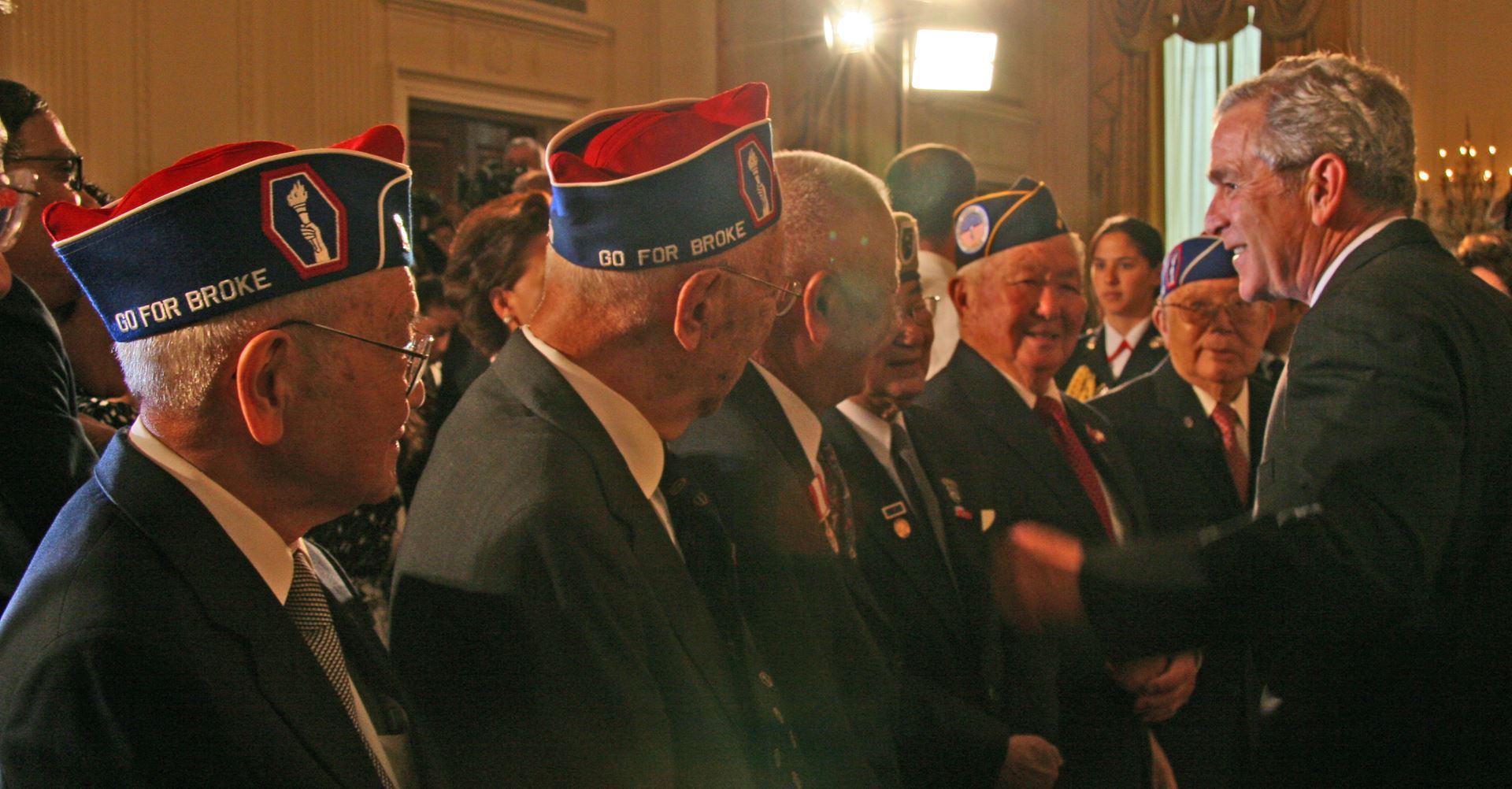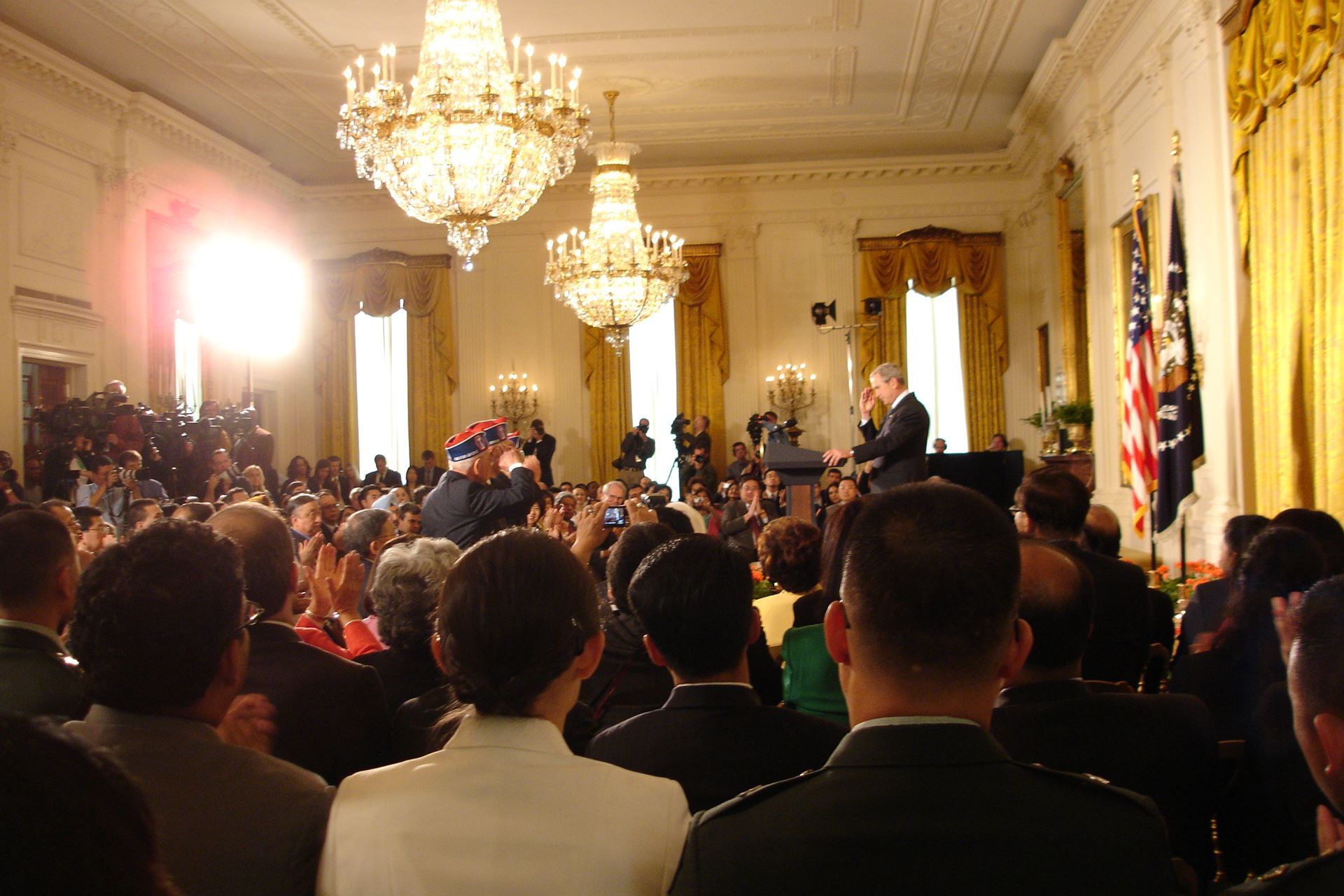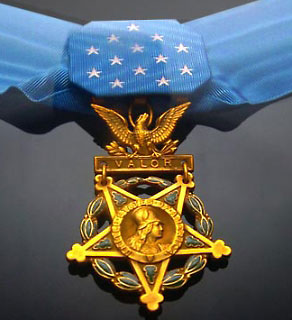The Japanese American Experience During World War II and Its Legacy
“We are all grateful to you for everything you have done for our country. Because of your outstanding bravery, it shines a spotlight on the wrong that was done to Japanese Americans during World War II. And you know that has had a lasting impact on the country as a whole because it reminded us that this country is built not on a particular race or religion or ethnicity, but it is based on creed and ideals that you have all followed. And so you know that what you did was important not only to the world, but it was important to reshaping how America thinks about itself. For that we are very, very thankful.” --President Barack Obama, February 18, 2014, White House, to Nisei Veterans
When Japan attacked Pearl Harbor on December 7, 1941, mass hysteria erupted in America against all persons of Japanese ancestry. Nisei (American-born children of Japanese immigrants) were viewed as innately disloyal and were barred from enlisting in the armed forces. The 1,432 Nisei who were already in the US Army in Hawaii were placed in the 100th Infantry Battalion and shipped to Wisconsin for training and subsequently deployed to Italy for combat. Mike Masaoka, Executive Secretary of the Japanese American Citizens League (JACL), encouraged the Nisei to petition the government to allow them to serve in combat to prove their loyalty. Masaoka believed a strong performance by the Nisei in combat was the best weapon to defeat racism and prejudice. In response to these petitions and the exemplary training record of the 100th, in early 1943 the US Army formed the 442nd Regimental Combat Team, consisting of 4000 volunteers from Hawaii and the mainland, many from internment camps. Following their training, the 442nd arrived in Italy in June 1944. The 100th merged into the 442nd. The 442nd was given tough assignments that other units failed to execute. When the War ended the US Army declared that the 442nd had the best combat performance record for its size and period of combat. Their awards included seven Presidential Unit Citations, 21 Medals of Honor and over 4,000 Purple Heart Medals. President Harry Truman’s review of the 442nd at the outer south lawn of the White House on July 15, 1946, confirmed Japanese American loyalty and placed Japanese Americans in America’s mainstream. The combat performance record of the 442nd and the segregated African American Tuskegee Airmen contributed to the post-war climate for reforms that leveled the playing fields for minorities to compete for any job and rank.
While over 10,000 Japanese Americans served in the 442nd, around 4,000 Nisei served in the Asia Pacific war zone fighting soldiers of their parents’ homeland. Trained in the Japanese language, these Military Intelligence Service members served as translators of captured documents, interrogators of prisoners of war, and monitors of enemy communications. They entered caves to persuade Japanese soldiers to surrender. They served in Special Forces working behind enemy lines to sabotage enemy operations. They were in the first or second wave of nearly every infantry or marine invasion to provide tactical intelligence obtained from translating enemy documents and interrogating prisoners real time. They were vulnerable to being shot by the Japanese or the Americans. They served in every unit that needed a linguist, including the allied forces such as Australia and Great Britain. The intelligence information they passed to their unit commanders turned potential defeat into victories. Thanks to the Nisei, US military commanders knew so much of the enemy before engagement. Nisei received such combat awards as the Distinguished Service Cross, Silver Star and the Purple Heart medals. Following the war, Nisei served in the demobilization and occupation of Japan with zeal to build a new Japan into an industrial giant.
Internment
On February 19, 1942, President Franklin D. Roosevelt issued Executive Order 9066 that established two military zones, the west coast of America and the Territory of Hawaii, each governed by a military governor with sweeping authority. On the Pacific coast of America, Military Governor Lt General John DeWitt used the order to incarcerate 110,000 ethnic Japanese--2/3 of them US citizens--in detention camps guarded by armed Army sentries. He discharged all Nisei from the Pacific military zone who were currently serving in the military. Most of them went home, helped their families pack, and entered the incarceration camps with them.
Lt General Delos C. Emmons, Military Governor of the Territory of Hawaii, who left Washington with orders to place all ethnic Japanese in internment camps on the mainland or on the island of Molokai and who faced a more immediate threat of land invasion by Japan, decided, after his arrival in Honolulu, that mass internment was not necessary. His military security chief and the FBI Bureau Director assured Emmons that 1,500 suspects had been arrested and the rest could be controlled under martial law. Emmons laid his rank and career on the line by stonewalling Washington DC, including the President, on the issue of internment, for two years until land invasion was no longer a threat.
Ten “relocation centers” housed Japanese Americans during the war years. They were hastily constructed and placed in remote, desolate locations: Manzanar and Tule Lake, California; Amache, Colorado; Minidoka, Idaho; Topaz, Utah; Heart Mountain, Wyoming; Rohwer and Jerome, Arkansas; and Gila River, Arizona. There were few amenities and the residents were very resourceful with what they had at hand.
Military Service: The 100th Battalion and the 442nd Regimental Combat Team
In response to the Nisei petitions to Washington to allow them to serve in combat to prove their loyalty, the impressive training record of the 100th Battalion and for other reasons, Washington approved the formation of the 442nd Regimental Combat Team in early 1943. The 442nd RCT was comprised of 4,000 Nisei volunteers from Hawaii and the mainland US--including men from internment camps. Following training at Camp Shelby, Mississippi, the 442nd RCT, with the motto Go For Broke, was shipped to Italy where the 100th had been fighting for the previous nine months. The 100th merged into the 442nd RCT and continued executing tough assignments successfully. When the war ended, the US Army declared that the 442nd RCT combat performance record was “unsurpassed” and that it was the most highly decorated unit for its size and period of combat. The 442nd RCT left over 650 Nisei on the battlefields of Italy and France.
Photos below, except Texas Governor proclamation to make 442nd veterans honorary citizens of Texas, are US Army Signal Service photos obtained from the National Archives. They were given to JAVA in 2011 by the Go For Broke National Education Center for educational purposes:
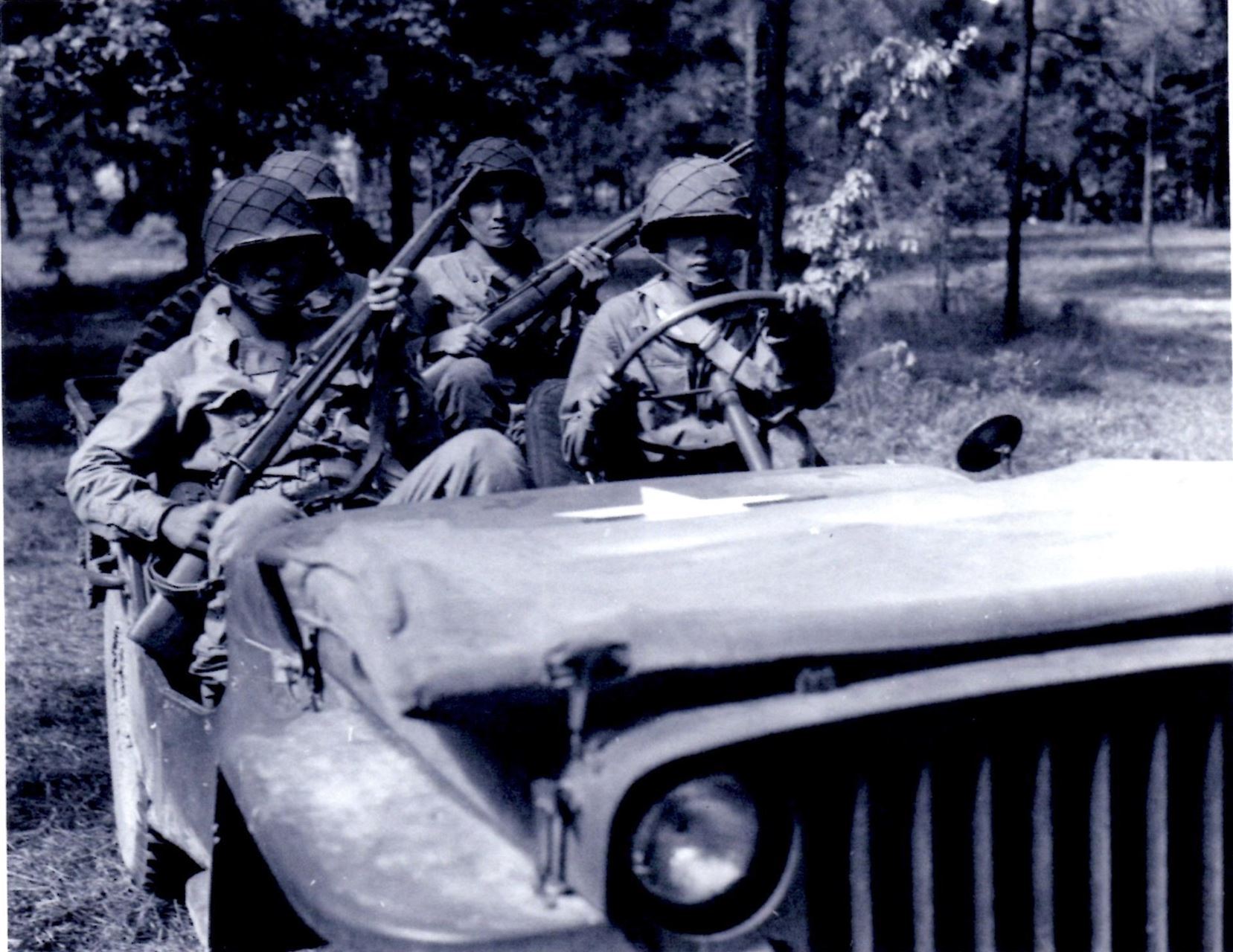
Soldiers training at Ft. Shelby, Mississippi.

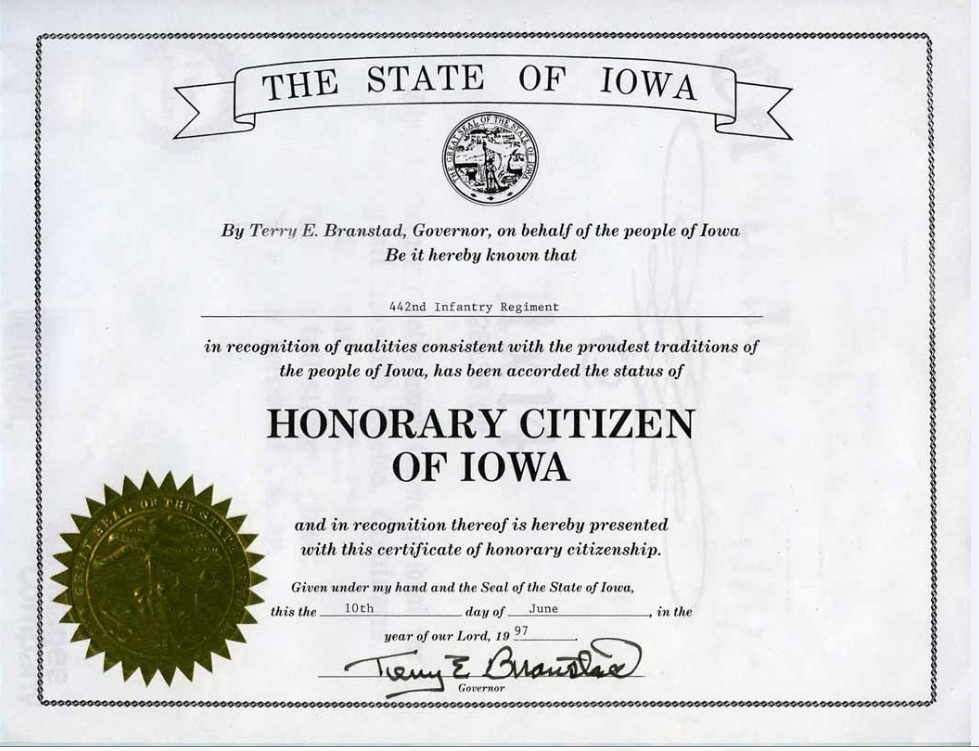
The 442nd RCT were made honorary Texans and Iowans after the war.
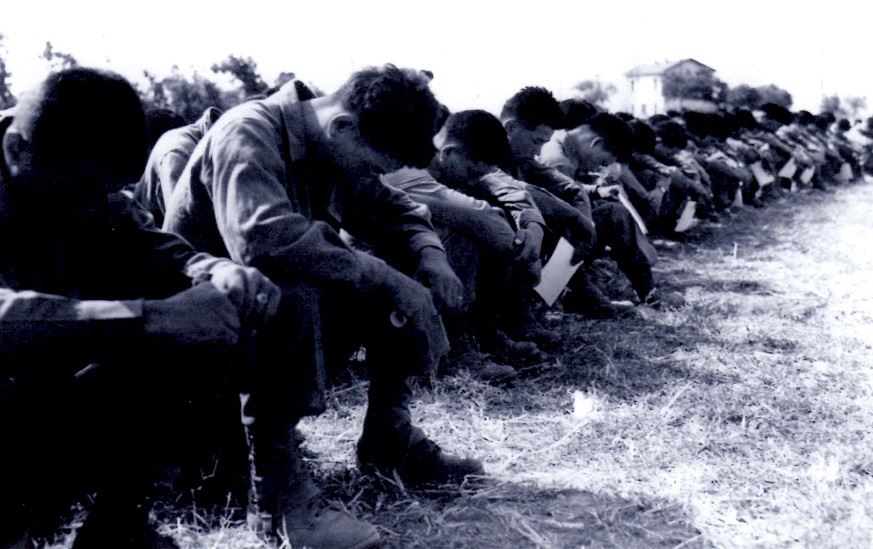
Nisei of the 2nd Bn 442nd RCT bow their heads in prayer
for those who gave their lives while fighting the enemy north of Rome.
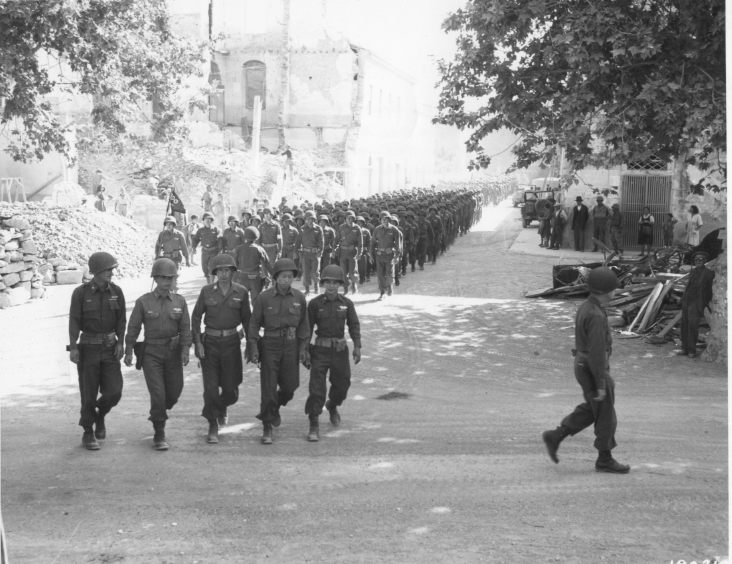
Vada area, Italy: 100th Battalion march to parade ground to
receive award.
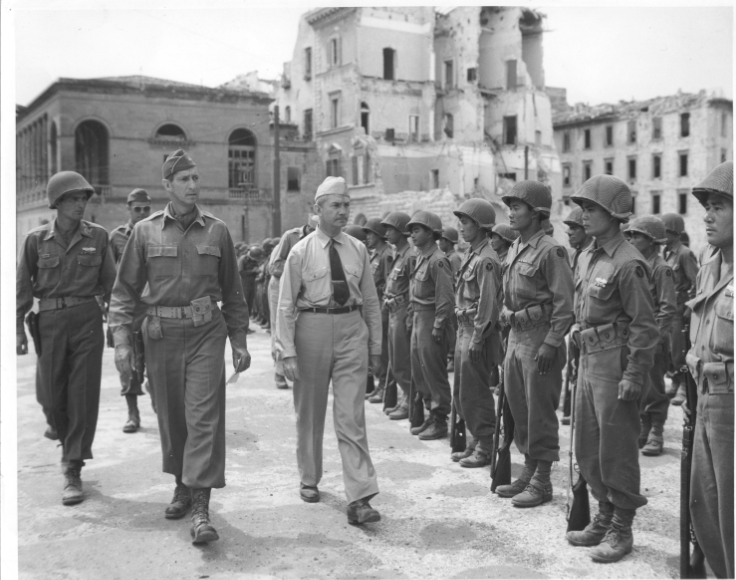
Vada area, Italy: LTG Mark Clark and Navy Secretary James Forrestall
reviewing the 100th Battalion.

Vada area, Italy: LTG Mark Clark pinning the Presidential
Unit Citation ribbon awarded to each member of
the 100th Battalion.

October 1944: A line of Army trucks full of 2nd Battalion infantrymen
move up to a new bivouac point in the Chambois area of France.
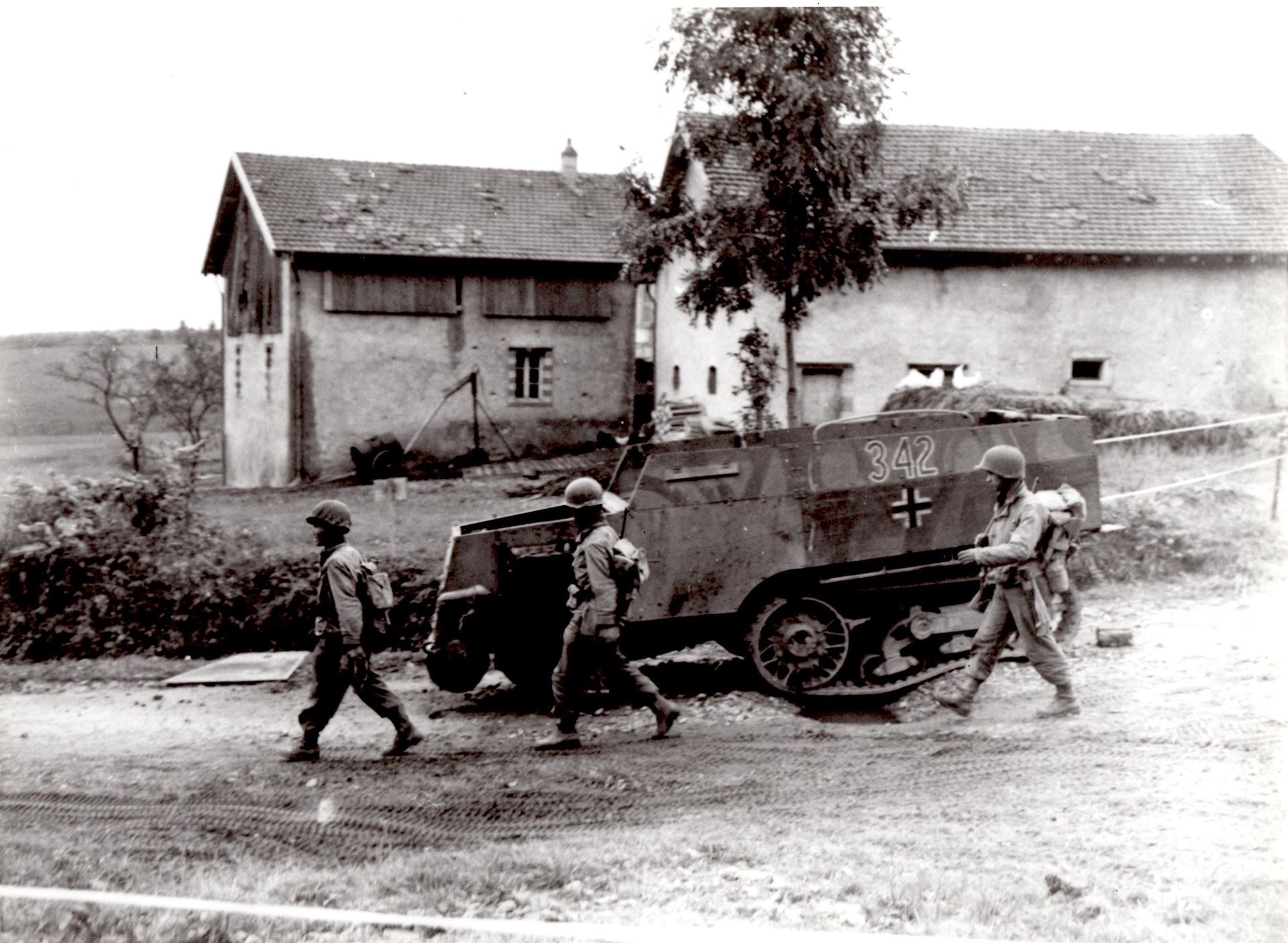
Nisei soldiers move past a knocked-out Nazi half-track in
Bruyeres, Vosges Forest, France.
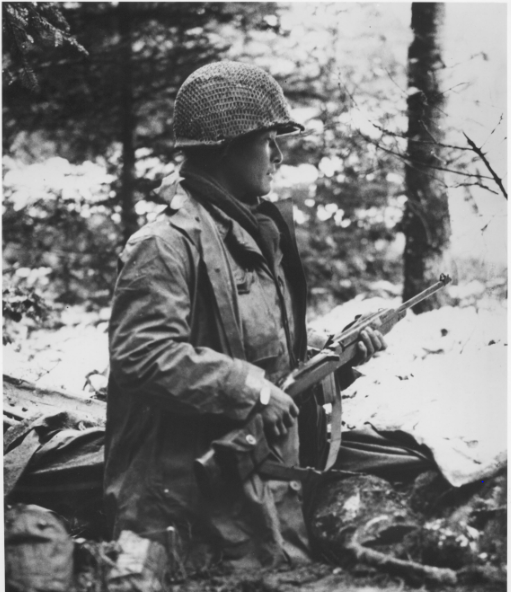
Vosges, France, 1944: Goichi Suehiro looks for German movements
in the valley 100 yards away. Co F, 2nd Bn, 442 RCT. (Signal Corps photo)
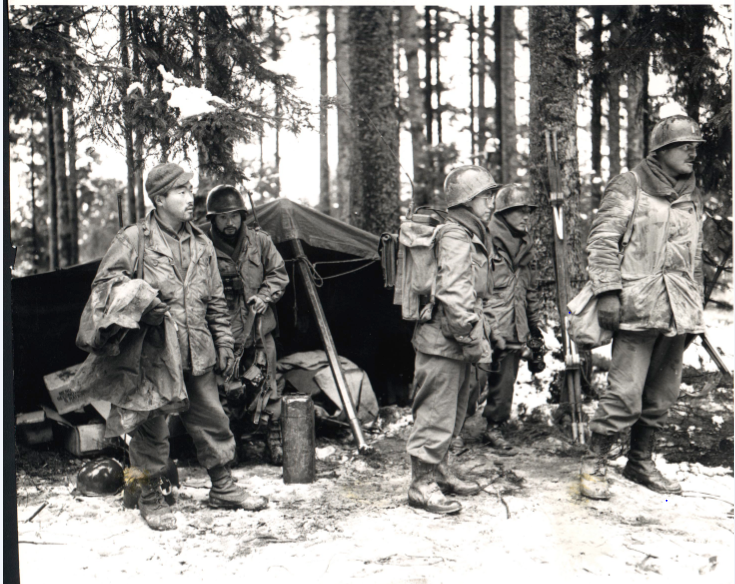
Vosges Forest, France, 11/14/1944:
Bob Yorita, Shigeru Suekuni, Lefty
Ichihara, Michio Takata, and Capt.
Joe Hill of F Company, 2nd Bn,
442 RCT, move out of its old
command post. Their unit is holding
a section of the front lines.
(Signal Corps photo)
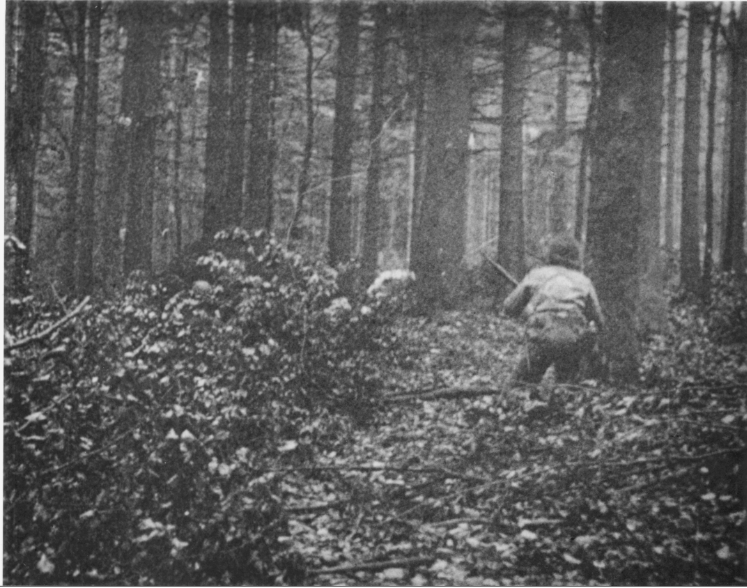
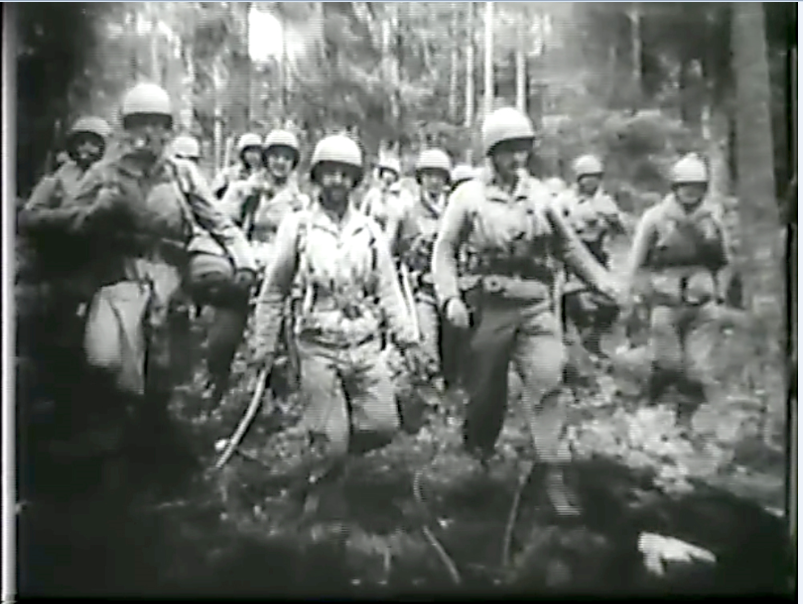

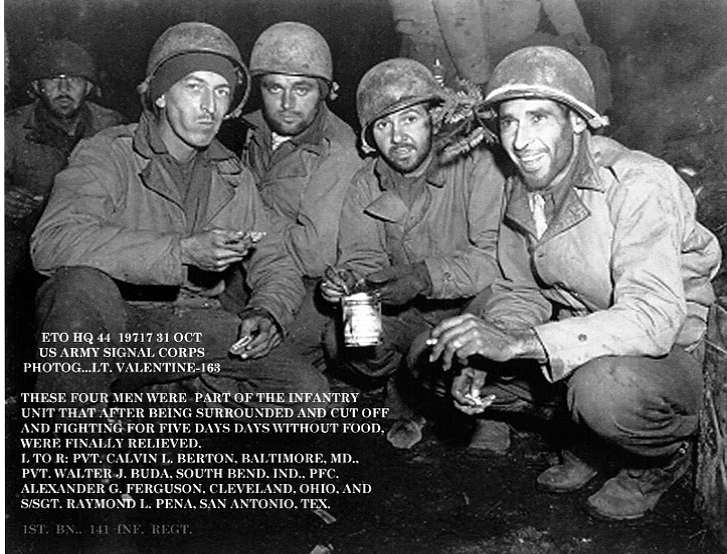
Photos above, l to r: When elements of the 36th Division failed to save the trapped Texans for two days, the 442nd was ordered to save them. Here a 442nd soldier is pursuing the German forces in the Vosges forest in northeastern France. The Texans, while low on ammunition and supplies, fought from the inside and the 442nd attacked from the outside. Photo 2: Finally, on October 30, 1944, after five days of bitter combat in rain, sleet, and snow, 211 Texans were freed. Those able to walk, walked out. Photo 3: Those wounded and those not able to walk were trucked out. Photo 4: Freed Texans enjoyed their first coffee break in seven days. Following his capture, the German commander of this operation said Hitler had ordered to kill them all and take no prisoners. (Signal Corps and 36th Division Veterans photos)
Watch this newsreel from 1944 to get the trapped Battalion story.
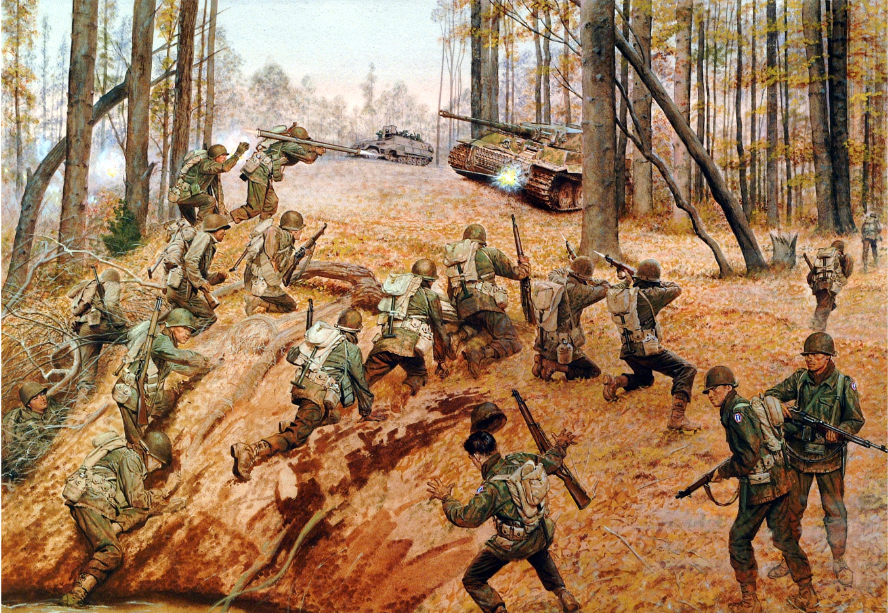
Rescue of the Trapped 1st Battalion, 141st Regiment, 36th Infantry Division
The US Army commissioned military artist Charles McBarron to paint 20
most fiercely fought battles in US Army history. One scene McBarron
selected was the October 1944 rescue of the 1st Bn, 141st Regiment,
36th (Texas) Division, by the 442nd RCT. The Texas battalion was en-
circled by superior German forces in the Vosges forest in northeastern
France and was doomed to be annihilated. After 5 days of bitter fighting,
including hand-to-hand with fixed bayonets, 211 Texans walked out to
freedom.
In the slightly over one month of combat in the Vosges, the 442nd sustained huge casualties. One company that started the rescue operation with 180 men had 16 men standing at the end of one battle, another company had 8 men standing. Five of the 7 Presidential Distinguished Unit Citations, 5 of the 21 Medals of Honor, and 9 of the 29 Distinguished Services crosses awarded to the 442nd illustrate the intensity of combat. The 442nd fought true to the Army dictum: don’t leave your buddy behind, save them at all costs. The enemy abandoned their fortress in the Vosges forests thus giving the 7th Army a clear shot for the invasion of the German homeland
The 442nd RCT and the 100th were engaged in a series of tough battles including Monte Cassino and Anzio, but the rescue of the Texas Trapped Battalion stands out as the defining moment to affirm the loyalty of Japanese Americans to our country while their families were imprisoned in America.

Major Mitsuyoshi Fukuda, C.O., 100th Infantry Battalion, 442nd RCT. Photo taken during Po Valley Campaign in Italy in April 1945. Fukuda was the highest ranking Nisei in the 442nd and one of the four highest ranking Nisei in the US Army during WWII. Photo: U.S. Signal Corps.
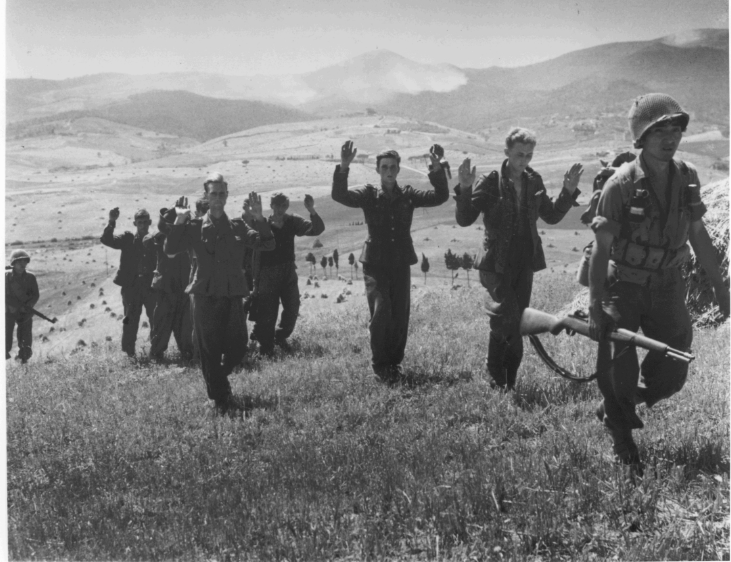
German troops surrender to 100th Bn in Orciano area of Italy during
Po Valley campaign, April, 1945.
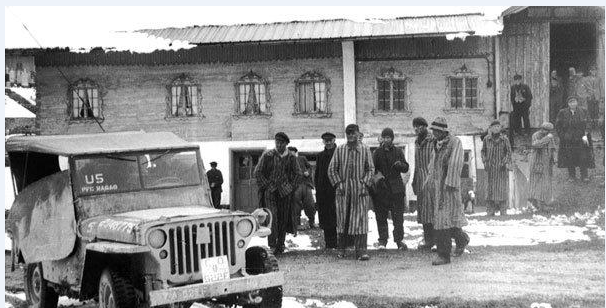 The 522nd Field Artillery Battalion of the 442nd RCT liberated a Jewish extermination sub-camp at Dachau, Germany, towards the end of WW II. In this photo by George Oiye of the 522nd, the inmates are seen milling around. Following the 442nd assignment to the Vosges forests, the 522nd was detached from the 442nd and assigned to LTG Alexander Patch’s 7th Army for the invasion of Germany while the main unit of the 442nd was assigned to the Maritime Alps, on the French side of the border between France and Italy. In March 1945, the 442nd, minus the 522nd Bn, was deployed back to Italy to pierce the German Gothic Line at Tuscany, north of Pisa, which had repelled Allied attacks for the previous five months.
The 522nd Field Artillery Battalion of the 442nd RCT liberated a Jewish extermination sub-camp at Dachau, Germany, towards the end of WW II. In this photo by George Oiye of the 522nd, the inmates are seen milling around. Following the 442nd assignment to the Vosges forests, the 522nd was detached from the 442nd and assigned to LTG Alexander Patch’s 7th Army for the invasion of Germany while the main unit of the 442nd was assigned to the Maritime Alps, on the French side of the border between France and Italy. In March 1945, the 442nd, minus the 522nd Bn, was deployed back to Italy to pierce the German Gothic Line at Tuscany, north of Pisa, which had repelled Allied attacks for the previous five months.
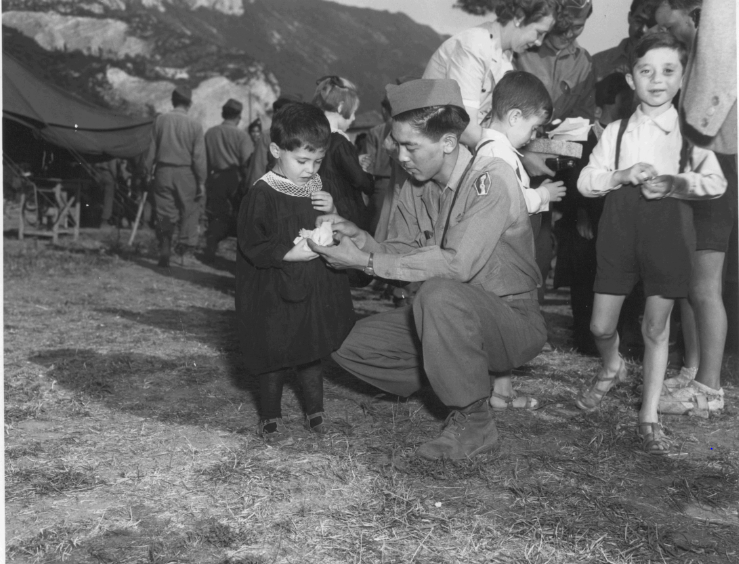
We end this sequence of photos with a more cheerful image:
PFC George Morihiro,
I Co, 442nd with a little orphan from the St Joseph’s Orphanage in Italy who
attended the RCT's July 4th,
1945, party .
Nisei in Military Intelligence Service (MIS) during WWII
The Military Intelligence Service was formed from approximately 4,000 Nisei linguists who volunteered to serve in the Asia Pacific War Zone as translators of documents, interrogators of Japanese prisoners, and communication monitors. They served in the first or second wave of nearly every Marine and Infantry invasion to collect and pass intelligence information to their commanders in real time. They entered caves to persuade Japanese soldiers to surrender. They risked being shot at when they took huge risks on the battlefront.
Many MIS members had studied in Japan and many had families living there. While their loyalty was questioned by Caucasian personnel until they got to know the Nisei, there was no case of desertion or any act of disloyalty. Admiral Chester W. Nimitz said about the Nisei linguists: "Before World War II, I entertained some doubt as to the loyalty of American citizens of Japanese ancestry in the event of war with Japan. From my observations during World War II, I no longer have that doubt." (Following the war, these Nisei served in the demobilization and occupation of Japan. Some Japanese people and soldiers viewed Nisei US soldiers as “traitors”.) 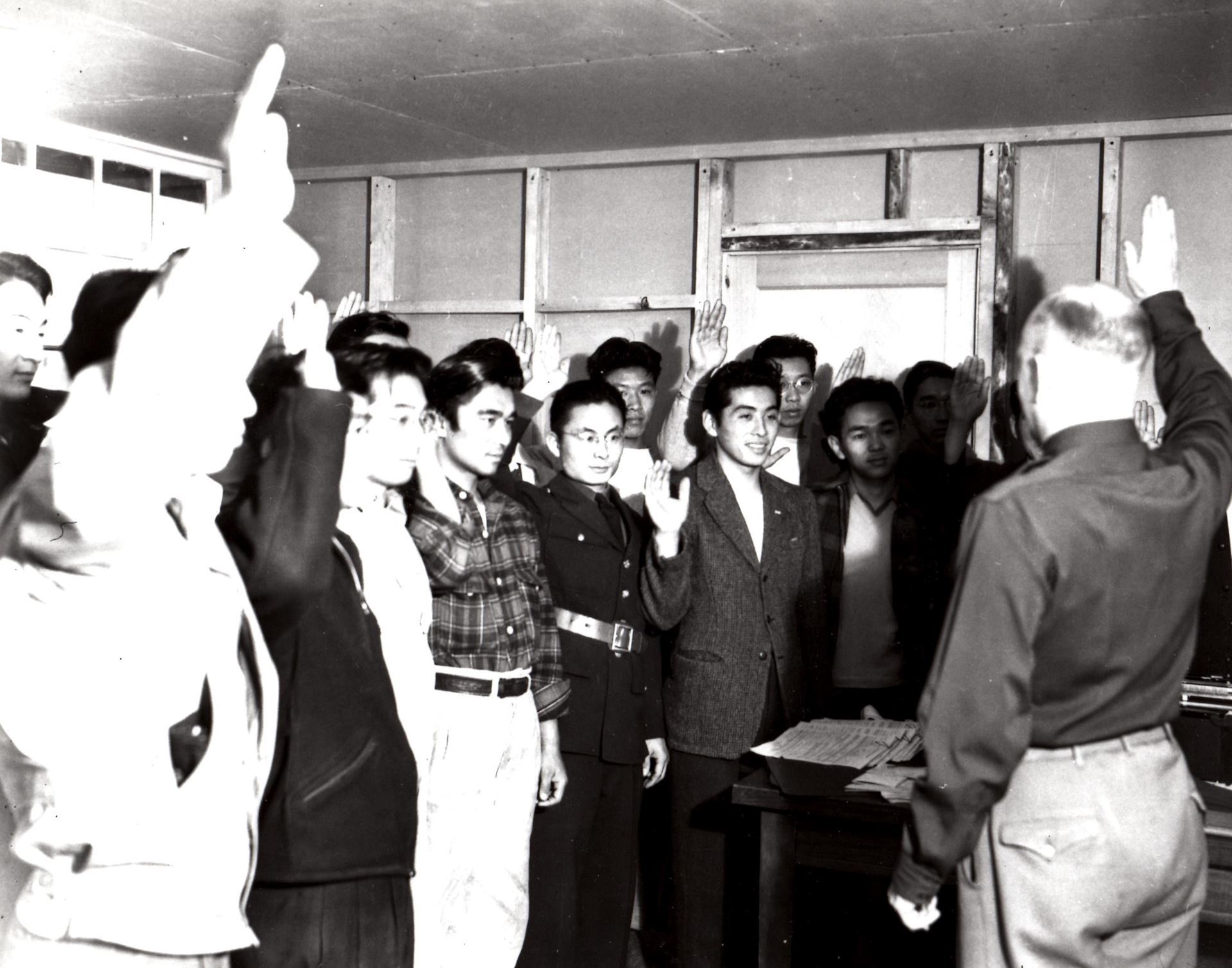
MIS volunteers are sworn in.
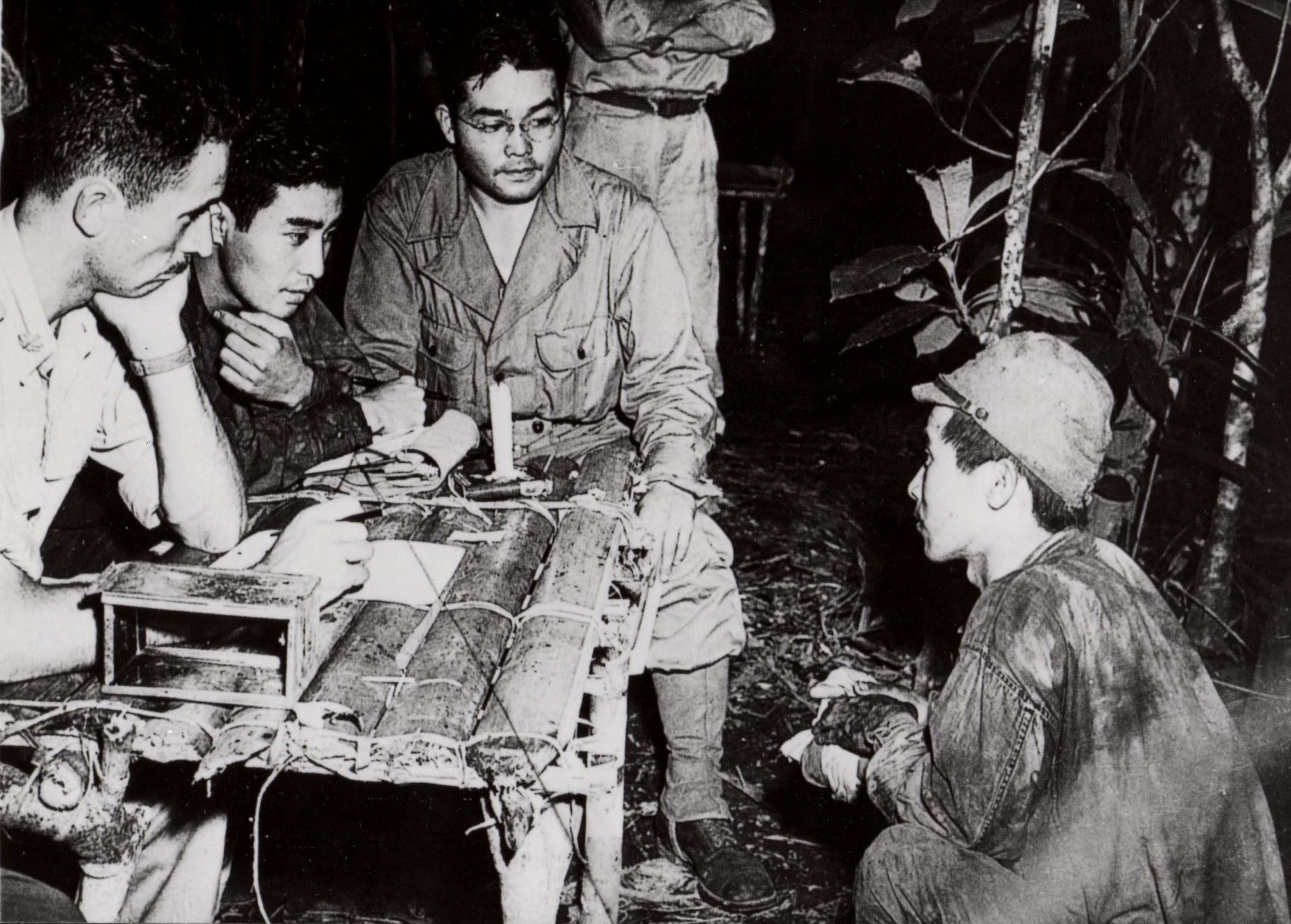
Phil Ishio (second from left) and Arthur Ushiro (Ishio’s
left) interrogating Japanese POW in Buna, New Guinea,
on January 2, 1943. Photo: U.S. Signal Corps.
The translation skills of the MIS linguists were often essential to the army forces. Photo below left: Eugene Wright, Slim Tanaka, and Ted Kihara are going over captured documents at Rendova, Solomon Islands, in June 1943. Below right: MIS Nisei would shout surrender instructions into captured pillboxes.
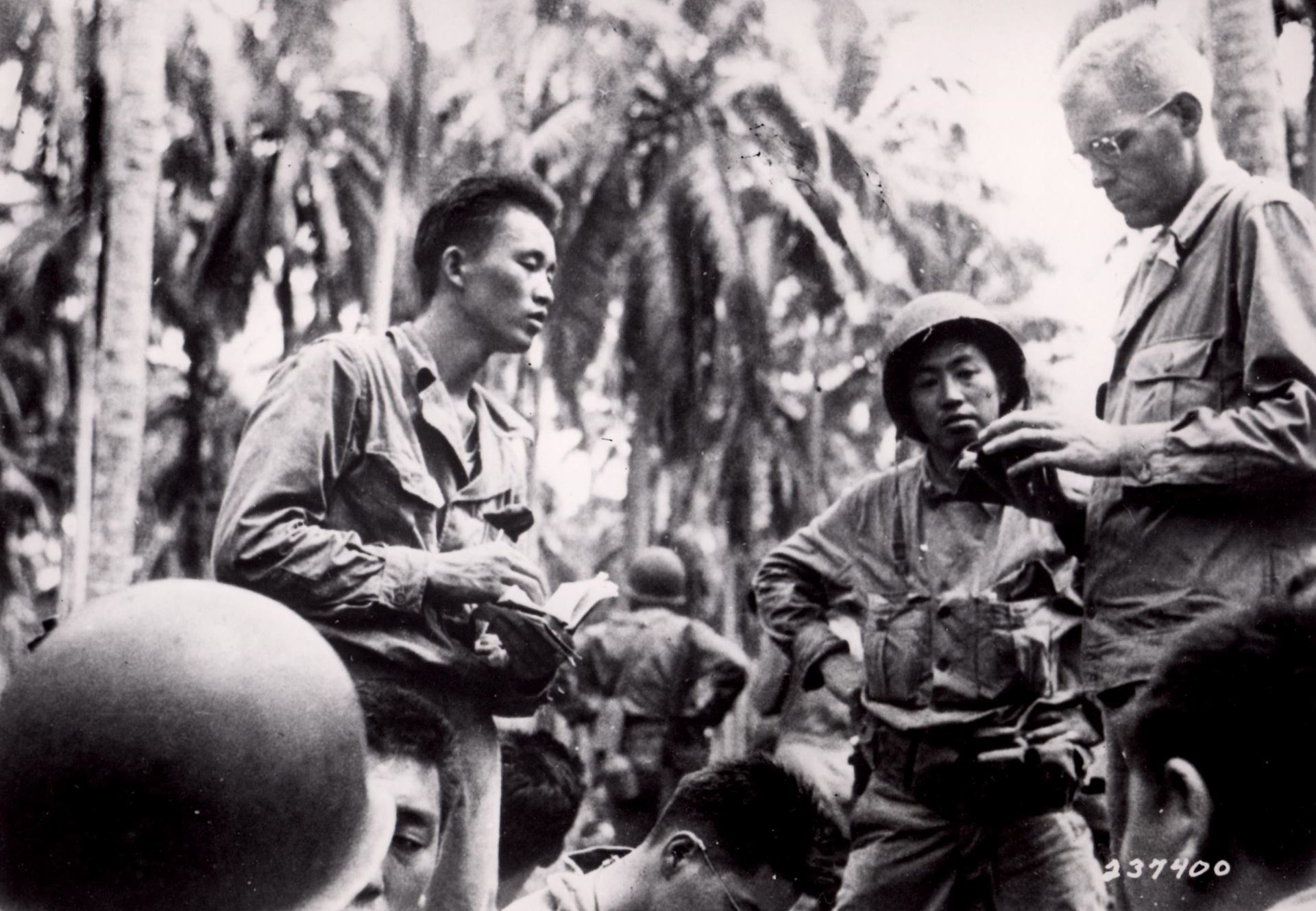
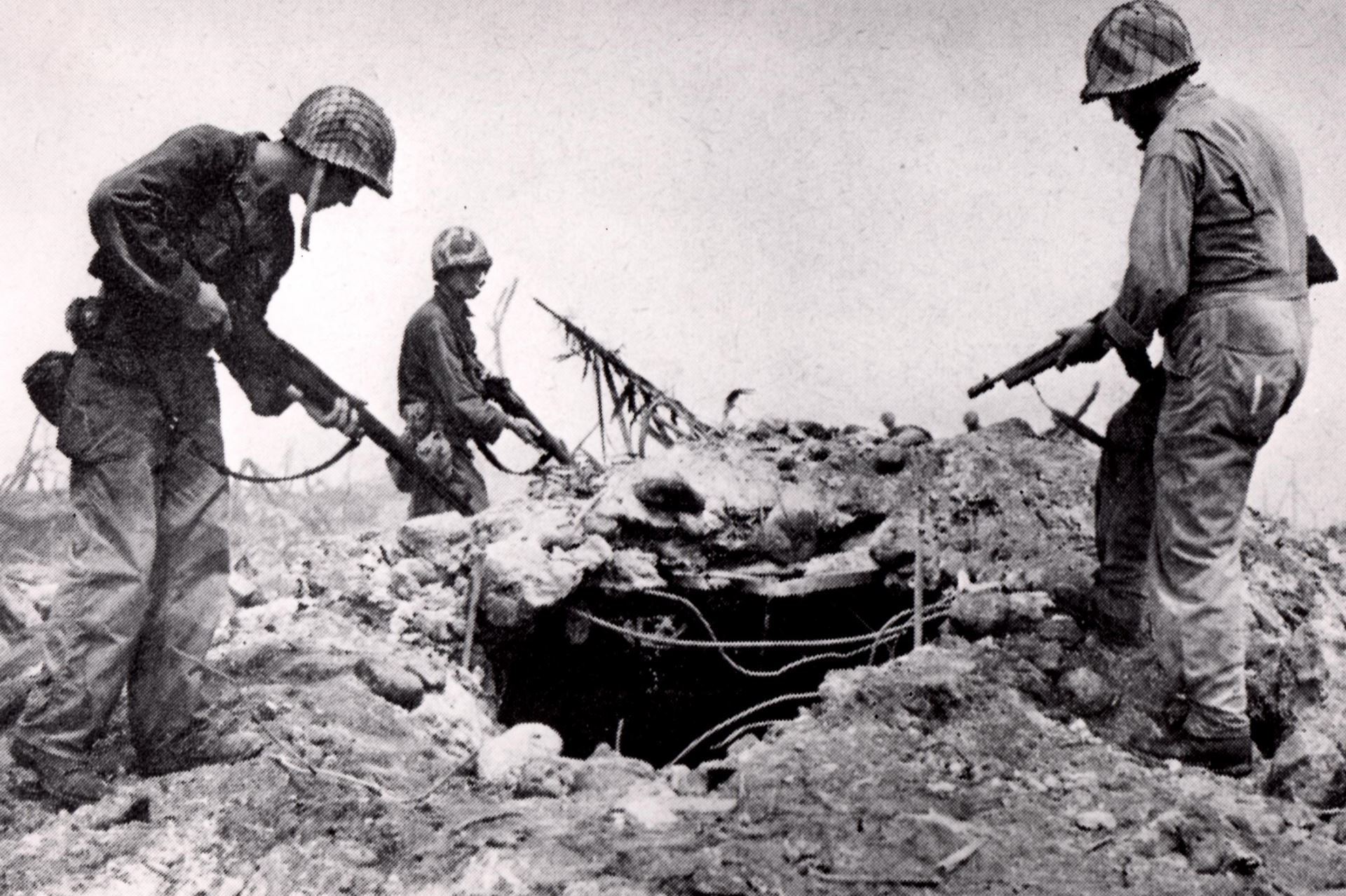
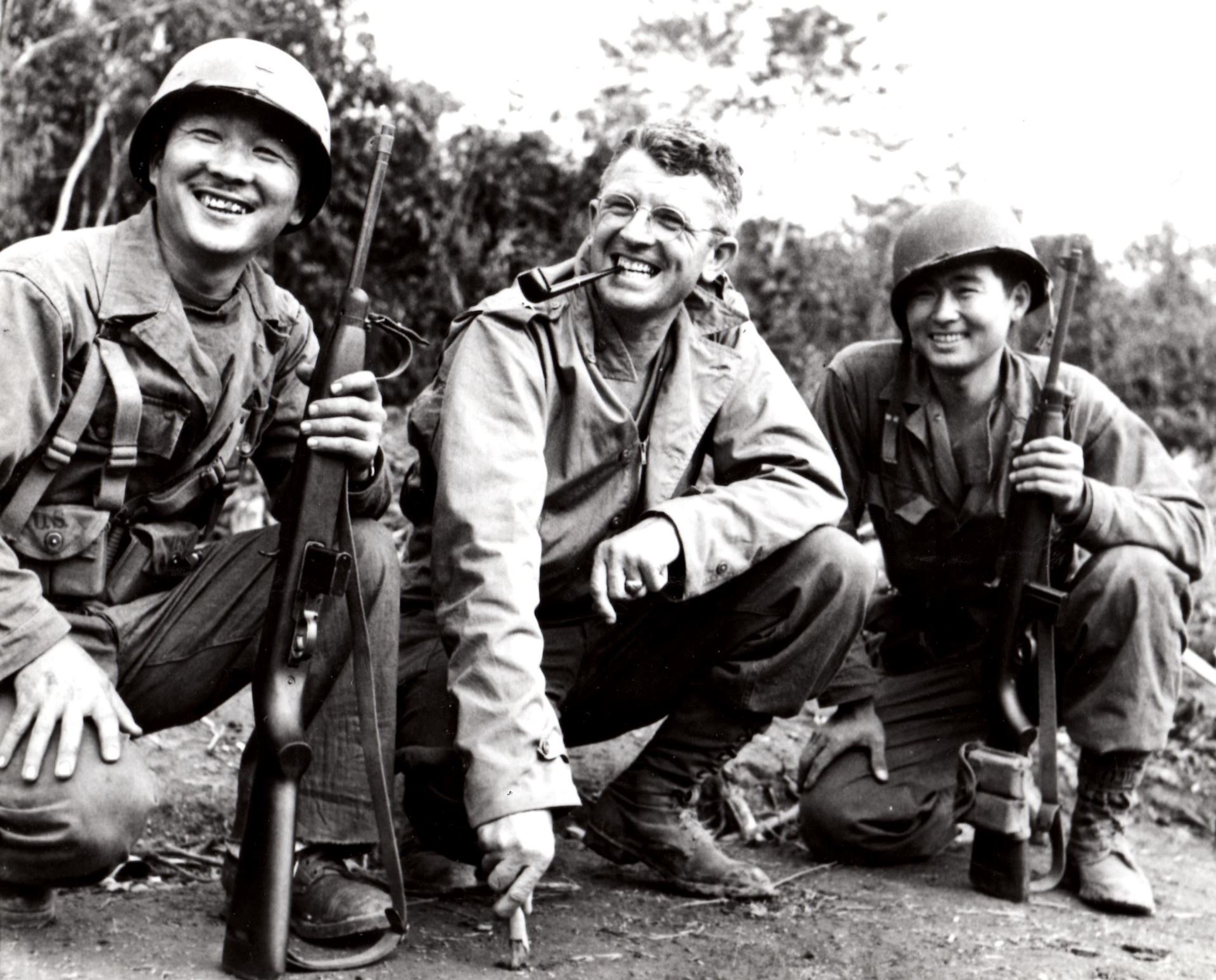
April 1944: Herbert Miyasaki, BG Frank Merrill, Commander of Merrill’s Marauders, and Akiji Yoshimura in Burma. Merrill’s Marauders was a brigade-sized special forces unit that became famous for their deep penetration behind enemy lines.
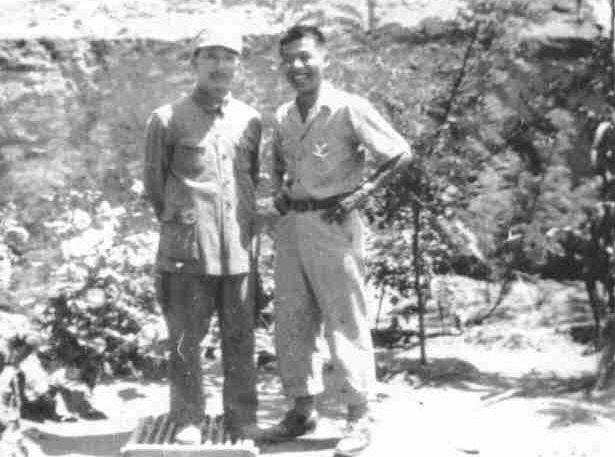 Nisei linguists experienced many unique assignments during WW II. Here is MISer Sho Nomura in Yan’an, China in 1944-1945. Five Nisei joined a small American contingent, nicknamed the Dixie Mission, to serve in Yan’an, where they lived in the caves along with the Chinese communists. The communists' point of contact for the Nisei was Susumu Okano, known as Nozaka Sanzo, the exiled Japan Communist Party leader. Nozaka arranged for the Nisei to interrogate Japanese prisoners of war for intelligence information. Nozaka also assisted the US Army propagandists to prepare leaflets and other propaganda material. Nozaka had Japanese newspapers delivered to his cave within 10 days of its publication. The American contingent were invited to the Communists Saturday night socials where they associated freely with Mao Tse Tung, Chou En Lai, Chu Teh and other Communist leaders.
Nisei linguists experienced many unique assignments during WW II. Here is MISer Sho Nomura in Yan’an, China in 1944-1945. Five Nisei joined a small American contingent, nicknamed the Dixie Mission, to serve in Yan’an, where they lived in the caves along with the Chinese communists. The communists' point of contact for the Nisei was Susumu Okano, known as Nozaka Sanzo, the exiled Japan Communist Party leader. Nozaka arranged for the Nisei to interrogate Japanese prisoners of war for intelligence information. Nozaka also assisted the US Army propagandists to prepare leaflets and other propaganda material. Nozaka had Japanese newspapers delivered to his cave within 10 days of its publication. The American contingent were invited to the Communists Saturday night socials where they associated freely with Mao Tse Tung, Chou En Lai, Chu Teh and other Communist leaders.
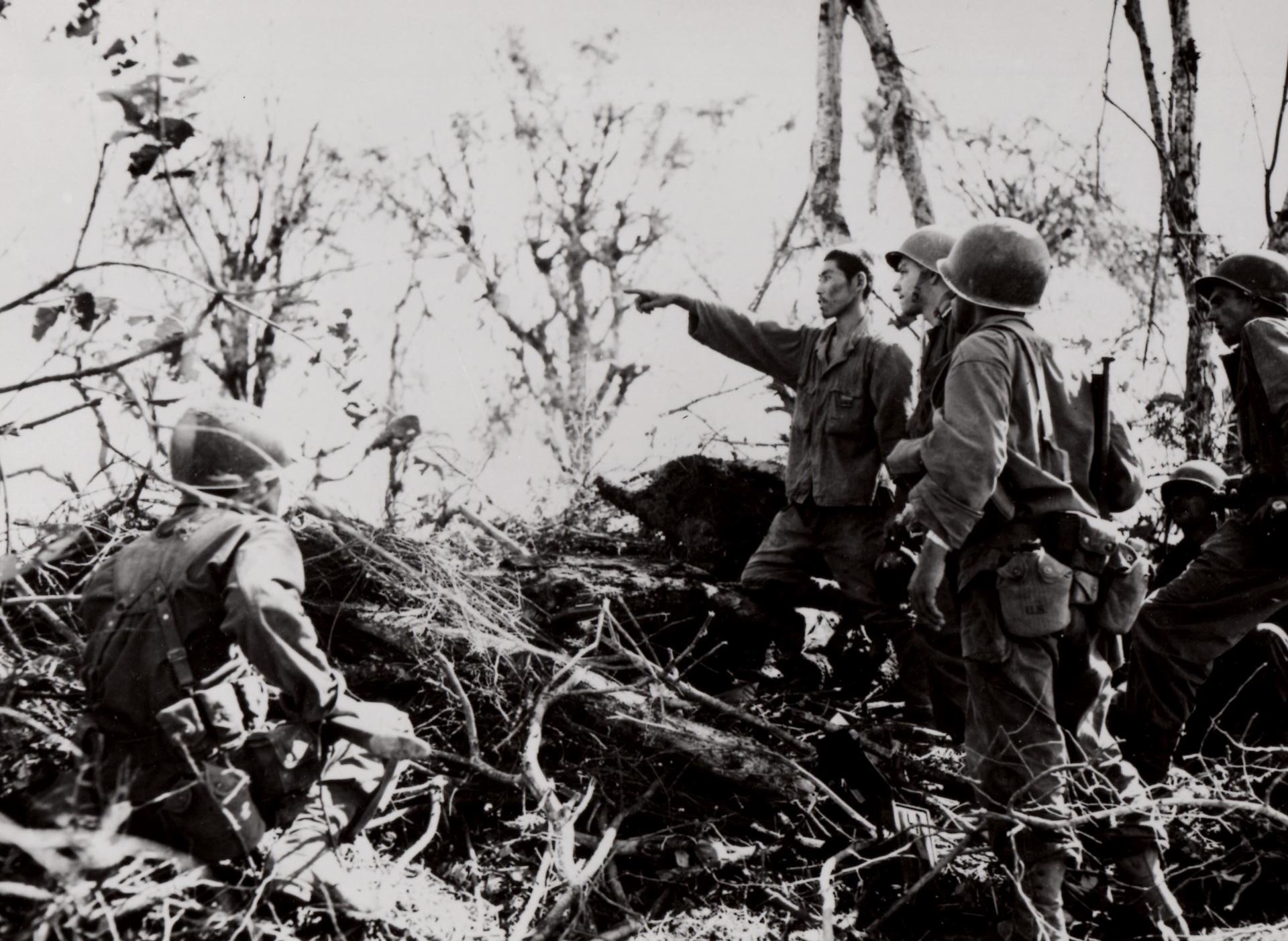
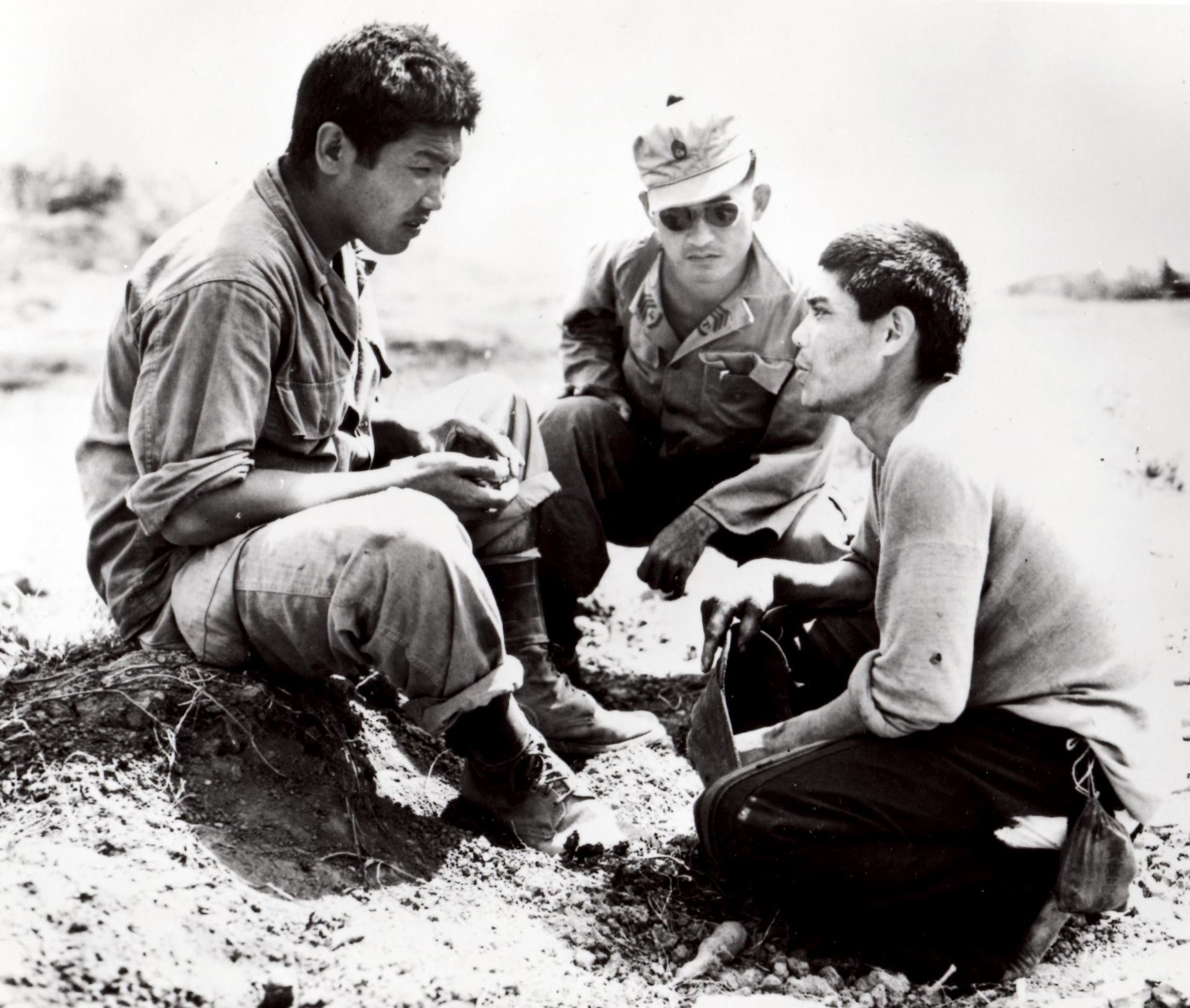
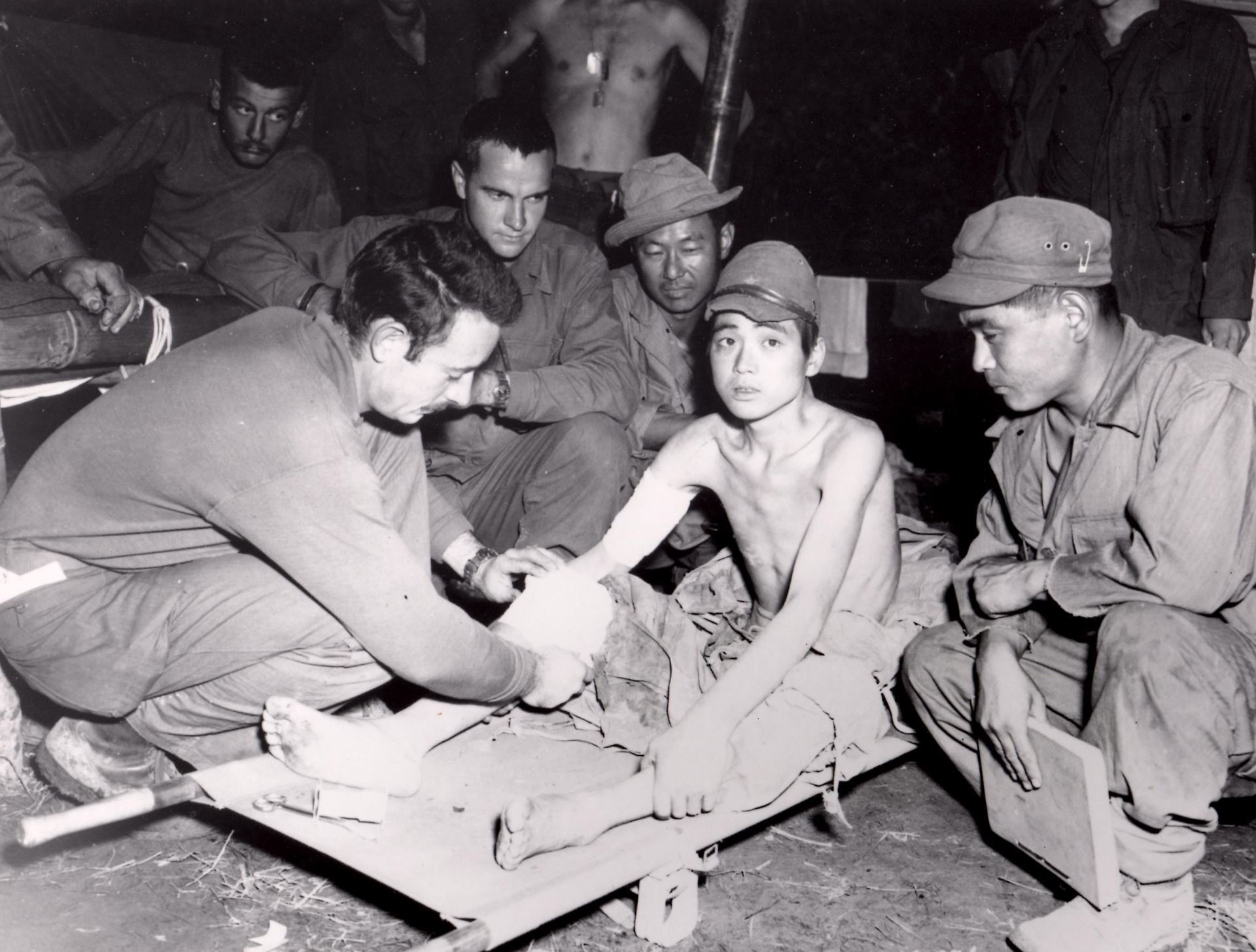
MIS soldiers serving on the front lines: Photo 1: A Japanese POW is pointing out Japanese locations in Southwest Asia. Photo 2: Japanese sailor being interrogated by Bud Mukai (Leyte, Philippines) Photo 3: Wounded Imperial Japanese soldier being treated for his wound while being interrogated by T/4 Toma Tasaki and T/3 Hisao Mikuni, both from Hawaii. (Nawkham, Burma, 1/18/1945)
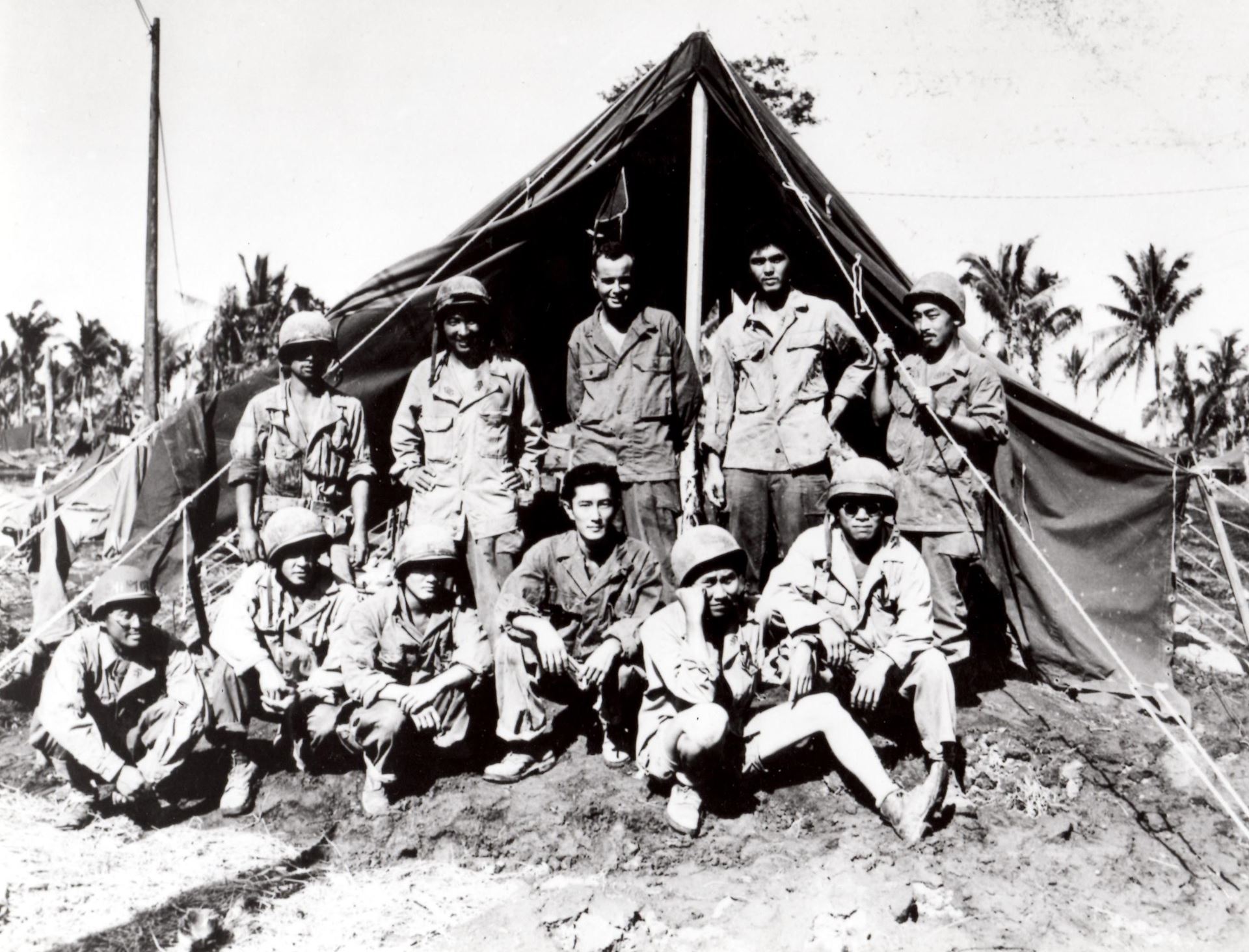
306th HQ Intelligence Detachment, XXIV Corps, Leyte, Philippines, November 1, 1944. Front row, l to r: George Shimotori, Saburo Okamura, Thomas Sasaki, Francis Yamamoto Herbert Nishihara, Warren Tsuneishi. Back row, l to r: Hiroshi Itow, Joe Nishihara, Lt. Richard Kleeman, TSgt George Takabayashi, Lloyd Shimasato.
(Signal Corps photo)
MISer Lt. Neishi discussing terms of surrender with Imperial Japanese General somewhere east of Manila in February or March 1945.
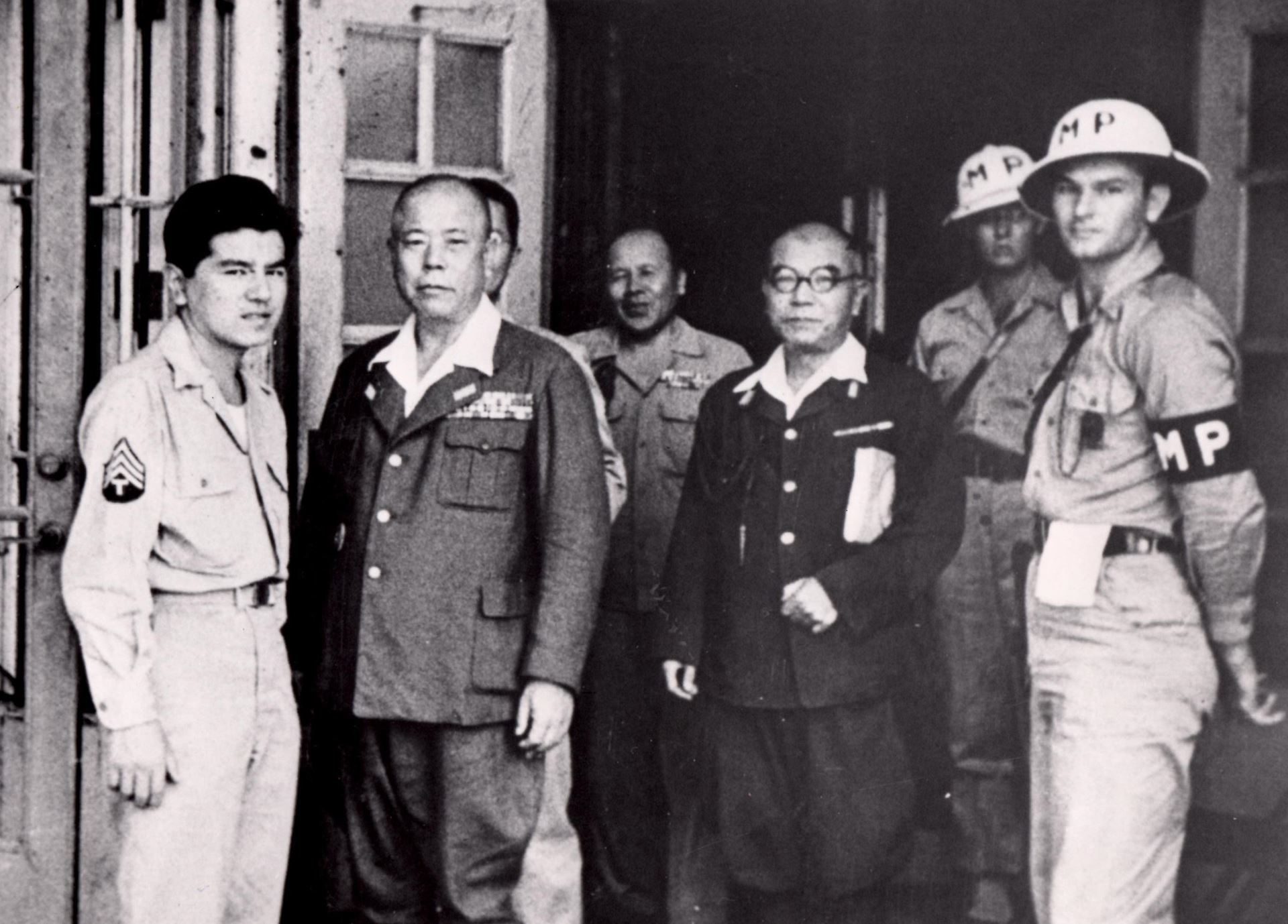
Tad Ichinokuchi with General Tomoyuki Yamashita at a prison in Manila, December 1945.
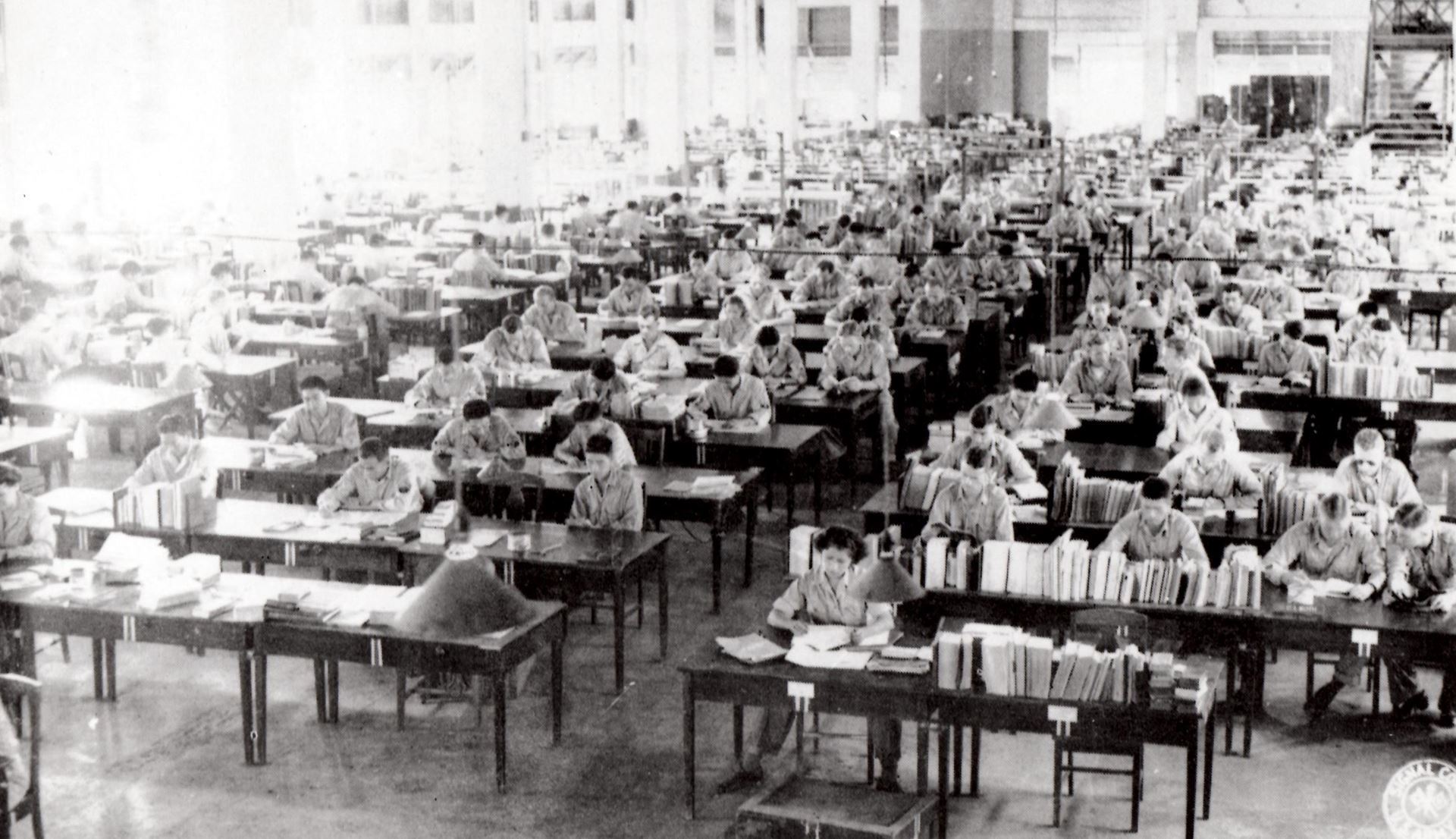
The ATIS (Allied Translation and Interpretive Service) translation section at Manila in March 1945. This section started with only a handful of translators about three years before.
Nisei Serving in the Army Air Corps and Other Branches of
Service During WW II
Though the US Navy, the Marines, the Coast Guard, the Merchant Marines, and the Army Air Corps banned Nisei enlistments, Historian Dr. James McIlwain, Professor Emeritus of Brown University, has reported that 11 Nisei served in the Army Air Corps; two Nisei served in the 2nd Marine Division in Guadalcanal and Tarawa; and one Nisei served in Papua New Guinea as a combatant. Of the 11 serving in the Army Air Corps, nine Nisei served as gunners in bombers, one was an Army weather pilot in the US, and another was an air observer for the 522nd Field Artillery Battalion of the 442nd RCT. The most famous gunner was Ben Kuroki. 14 served as intercept specialists on bombing missions in Asia. Two Nisei served in the US Coast Guard and 19 in the Merchant Marines.
Ben Kuroki flew 30 bombing missions in Europe, including the Ploesti oil depot in Rumania. Having completed his required number of missions, he returned for stateside duty. To avenge the death of two close friends in the Pacific War, Kuroki applied to fly B-29 bomber missions in Asia but was blocked because of a ban on Nisei flying there. When his requests through official channels were rejected, he sought the help of two members of the Commonwealth Club of San Francisco who sent letters to Secretary of War Stimson. Stimson wrote to Kuroki saying the exemption did not apply to him. Kuroki flew 28 missions in Asia, including many bombing raids over Japan. Kuroki said his 59th mission was to make speeches to defeat racism, discrimination and prejudice.
While the Congressional Gold Medal did not specifically include the above group, US Senator Daniel Inouye included them in his acceptance remarks at the CGM award ceremony at the US Congress on November 2, 2011.
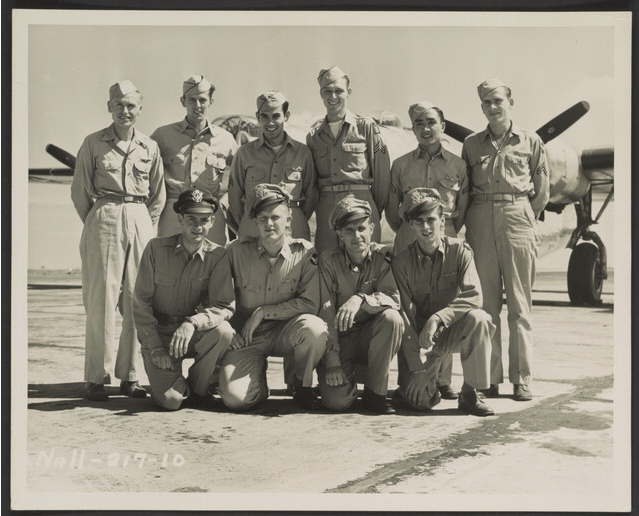
![]() Army Air Corps gunner Kenje Ogata with his original bomber crew. Front, left to right: Edward E.D. Nall, Elvin L. Sims, Murray Eskew, Gerald Tabor. Back, left to right: Lawrence Broadwater, Vincent Hanley, Thomas McHale, William P. Amos, Jr., Kenje Ogata, William Miskoff.
Army Air Corps gunner Kenje Ogata with his original bomber crew. Front, left to right: Edward E.D. Nall, Elvin L. Sims, Murray Eskew, Gerald Tabor. Back, left to right: Lawrence Broadwater, Vincent Hanley, Thomas McHale, William P. Amos, Jr., Kenje Ogata, William Miskoff.
Ogata’s crew flew December 26, 1944, on what was then the longest mission ever flown by the 15th Air Force. The target was in Oswiecim, Poland. They flew across Italy and Europe and continued, with permission, into and back out of Russia, because it was hoped that the enemy wouldn’t be expecting fighters to come from that direction.
There is video of him tell his story of bailing out: https://memory.loc.gov/diglib/vhp/story/loc.natlib.afc2001001.76800/. Click on “Interview Highlights” then click on the second item in the left-hand column, the synopsis beginning: “Having premonition of death before mission but surviving…”
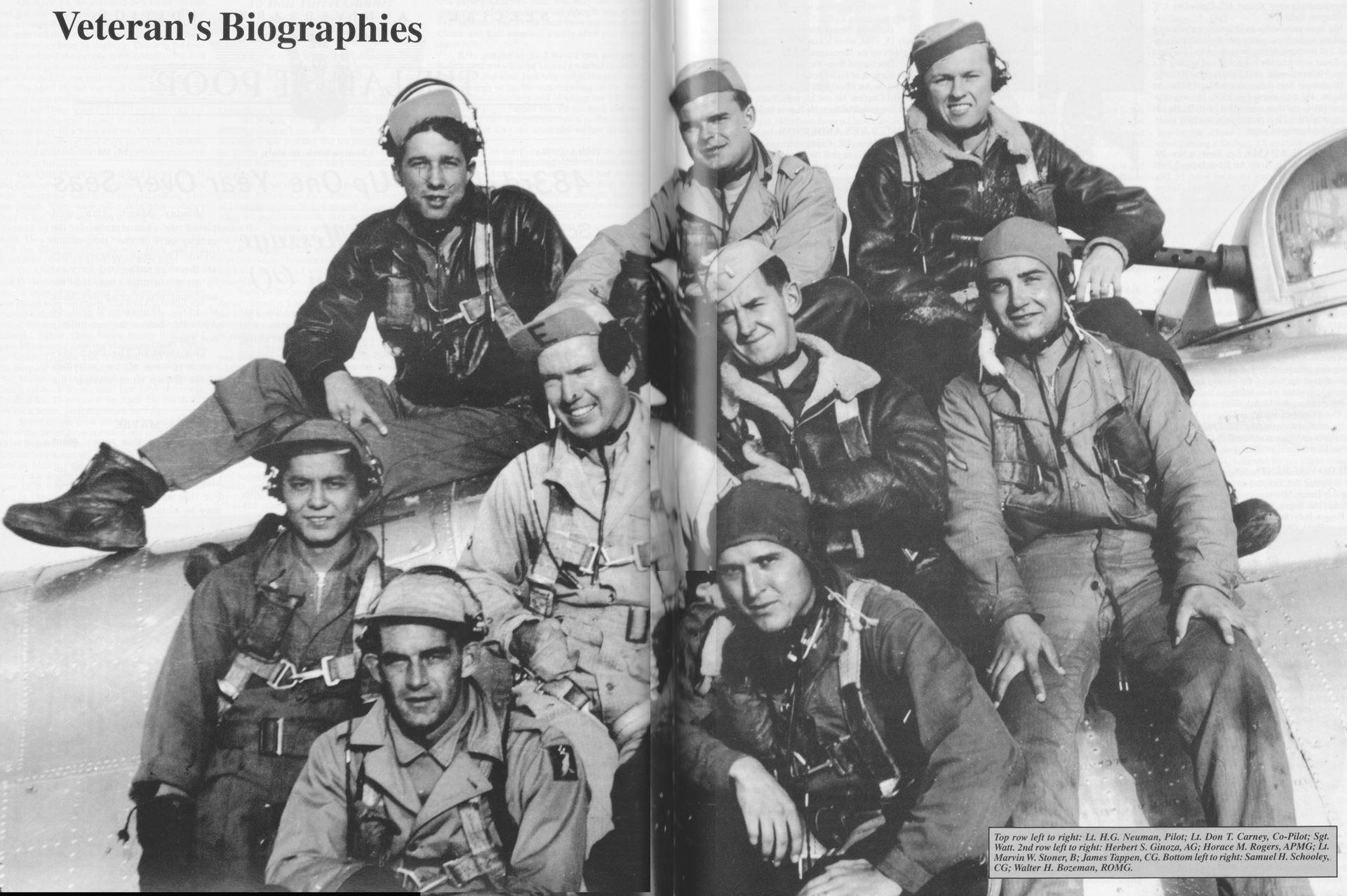
Top row left to right: Lt. H. G. Neuman, Pilot; Lt. Don T. Carney, Co-Pilot; Sgt. Watt. 2nd row left to right: Herbert S. Ginoza, AG; Horace M. Rogers, APMG; Lt. Marvin W. Stoner, B; James Tappen, CG. Bottom left to right: Samuel H. Schooley, CG; Walter H. Bozeman, ROMG.
.jpg)
Gunnery Sgt John H. Matsumoto entered the US Army Air Corps in 1941 and remained in service in Europe until he was assigned as an aerial gunner on board a Douglas A-20 attack bomber in 1943.
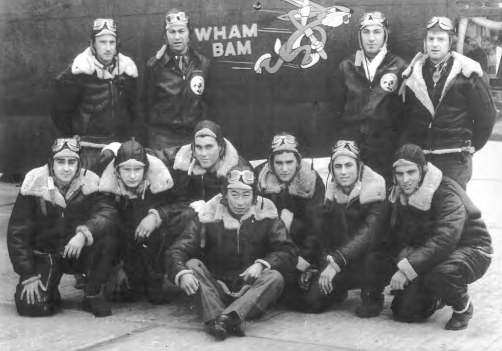
Left: Ben Kuroki (seated, center front) with fellow crew.
Below: Ben sticking his head through a hole in the glass canopy where he usually sat. His radio man pulled him into the plane and saved his life when these shots came through.
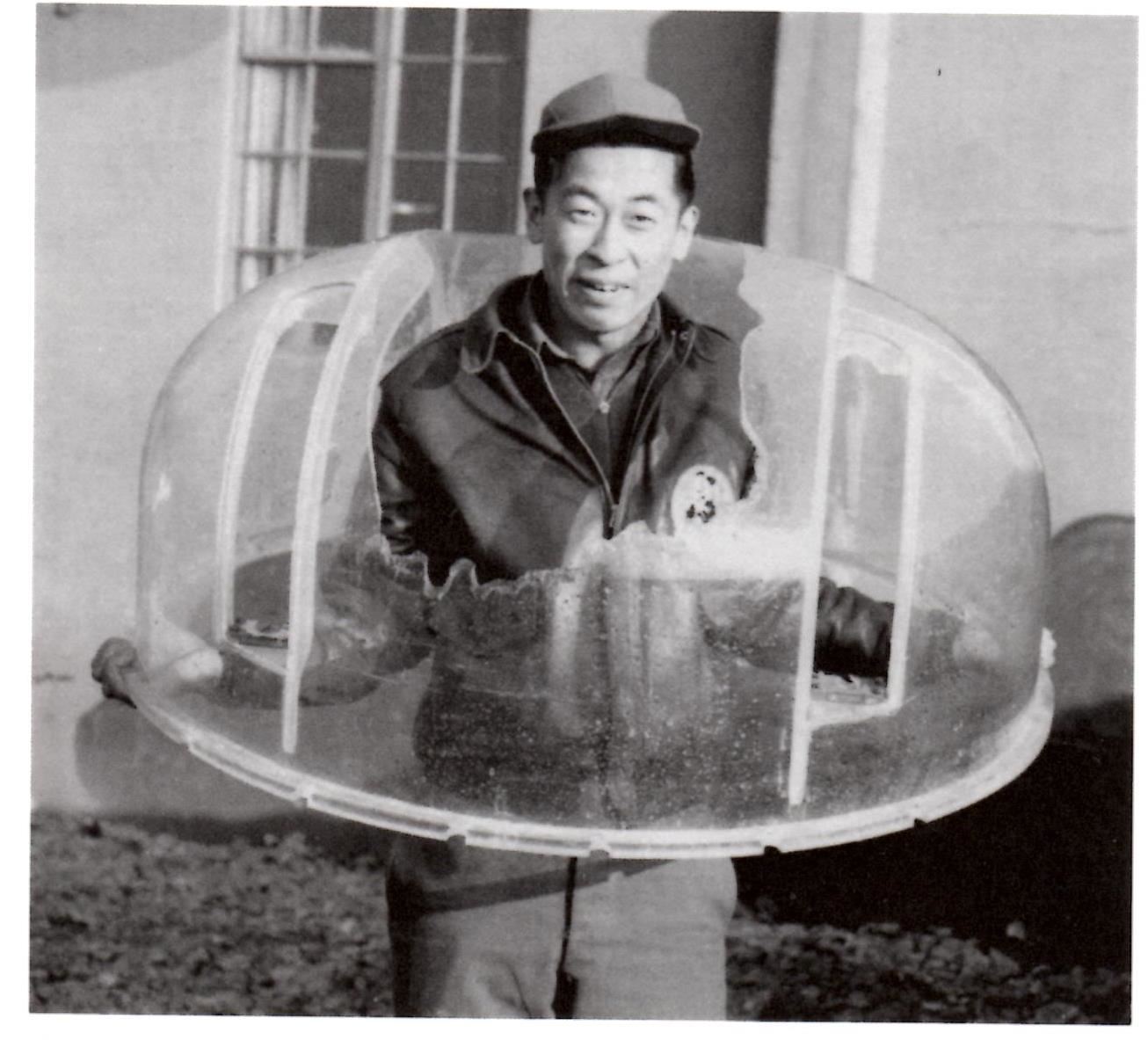
Nisei Women in the US Army
Approximately 200 Nisei women volunteered for the Army Nurses Corps, the Army Medical Corps (doctors), and the Women Auxiliary Corps (WAC). Nisei women were integrated into white WAC units and served as typists and clerks in recruitment offices and in medical detachments.
About 40 Nisei WACs enrolled in the MIS Language School at Fort Snelling, MN. Following graduation three remained at the MISLS as instructors and 13 were deployed to Japan to serve in the MIS in the Occupation of Japan.
Nisei women who chose the Army Nurse Corps received six months medical training and were sent to serve at field hospitals in Europe where they treated wounded soldiers. Others joined the Nurses Cadet Corps. A few Nisei doctors joined the Army Medical Corps.
Like the Nisei men, Nisei women volunteered for military duty to prove their loyalty and to help America win the War.

Two WAC non-commissioned officers
 Left: Private Shizuko Shinagawa
Left: Private Shizuko Shinagawa

Nisei WAC graduating class
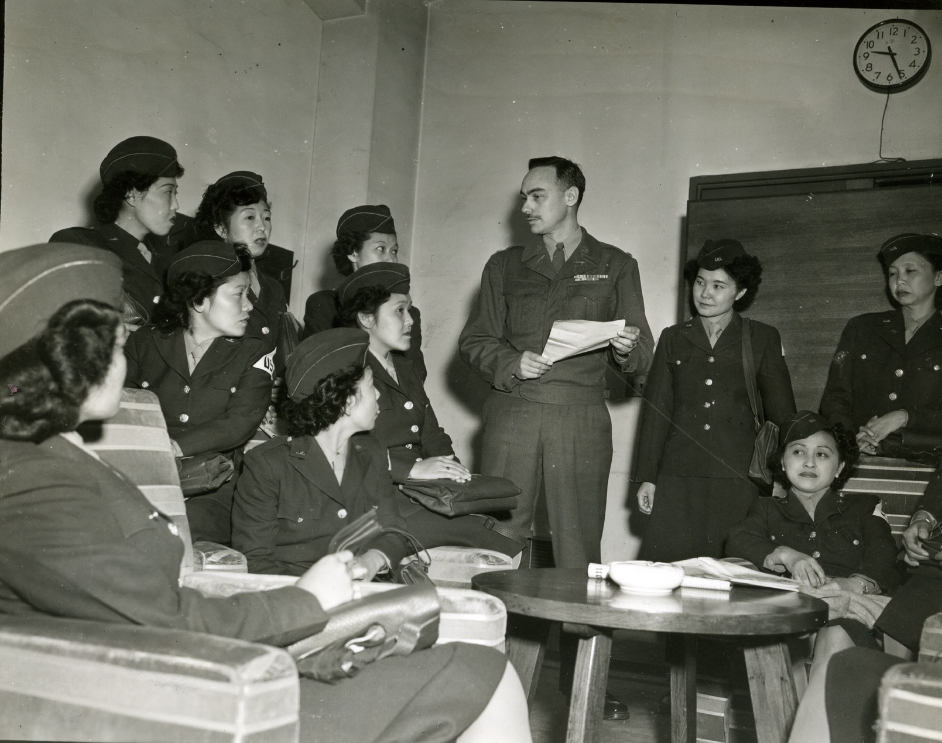 Nisei WACs receive a briefing (above).
Nisei WACs receive a briefing (above).
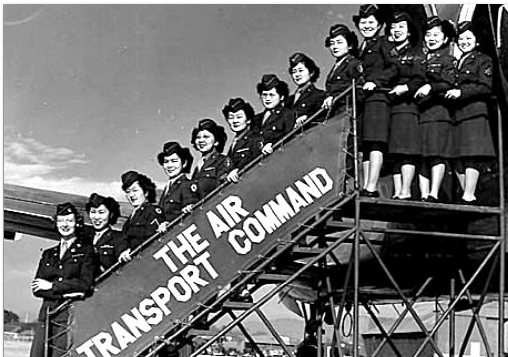
These WACs L-R are Rhoda Knudten, Fumiko Segawa, Mickey Minata, Terry Nakanishi, Matsuko Kido, Chito Isonaga, Bertha Chin, Edith Kodama, Harriet Hirakawa, Miwako Yanamoto, Atsuko Mori, Sue Shinagawa, and Mary Nakamura. When they arrived in Tokyo General MacArthur refused to accept them. He requested they be returned to the States or shed their uniforms and serve in the MIS in the Occupation as civilians, GS-7. The WACs selected the latter.
Review of the 442nd RCT by President Harry S Truman
On July 15, 1946, President Harry Truman reviewed the 442nd RCT at the Ellipse, the outer south lawn of the White House, following its march down Constitution Avenue. That morning rained hard in Washington, DC, and an aide advised the President he should cancel his portion of the day’s event. Truman is said to have replied, “Hell no, for what these boys have done, I can stand a little rain”. He told the 442, “You fought the enemy abroad and prejudice at home, and you won”. By his remarks, Truman confirmed Japanese American loyalty and placed them in America’s mainstream. This statement resonated across the land, supported by strong editorials, one of which won the Pulitzer Prize.
President Truman’s statement, in effect, removed the stigma of disloyalty placed on Japanese Americans in 1941 by President Franklin D. Roosevelt and the War Department when they incarcerated 110,000 people, two-thirds of them citizens, and declared military-age individuals to be aliens, unfit for military duty.
The following sequence of images gives us a sense of the glory heaped on the 442nd RCT when they returned to the U.S.
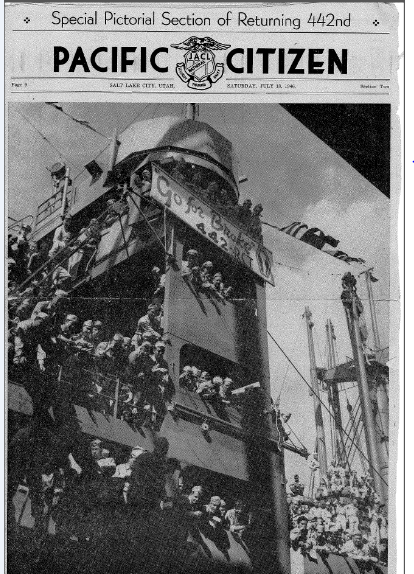
The Wilson Victory left Leghorn, Italy, on June 22, 1946 and arrived at New York City on July 2. The vessel was met at Ambrose light by two fire boats, a Navy blimp and fighter planes. There was a welcoming program at the pier. The 442nd members were guests of Camp Kilmer for five days. There were many press conferences, including on TV, which was making its debut. Hawaii flew in 1,000 orchid leis. The 442nd departed on schedule for Fort Belvoir, Virginia, for the review by President Harry Truman on July 15, 1946. The 442nd left Fort Belvoir on July 21, 1946 for Staten Island, New York, where they boarded the Waterbury Victory for the trip to Hawaii via the Panama Canal. The colors were deactivated in early August 1946 and personnel were discharged.
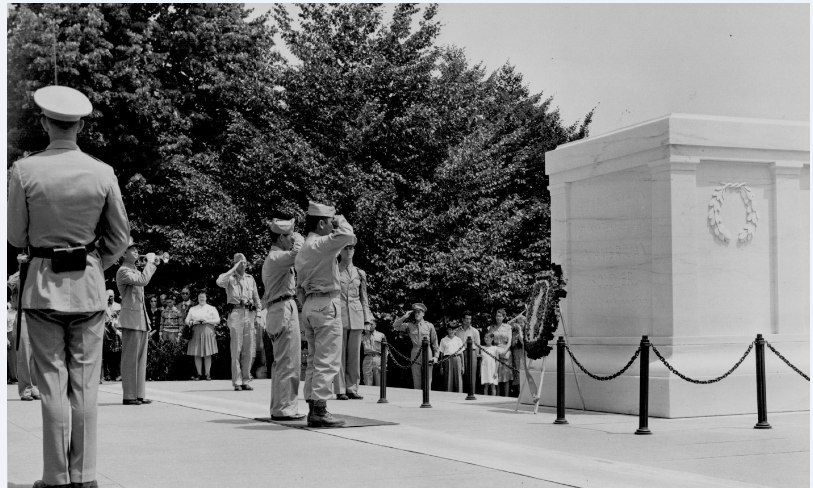 Thirteen members of the 442nd RCT participated in a wreath-laying ceremony at Arlington National Cemetery's Tomb of the Unknown Soldier. Corporal Kiyoshi Hotta of Wailuku, Maui, and PFC Raizo Okazaki of New York City, both of whose brothers were declared Missing in Action, are rendering the hand salute while the bugler is sounding taps. The 442ndRCT was in Washington, DC, to be reviewed by President Truman on July 15, 1946. Photo: U.S. Signal Corps.
Thirteen members of the 442nd RCT participated in a wreath-laying ceremony at Arlington National Cemetery's Tomb of the Unknown Soldier. Corporal Kiyoshi Hotta of Wailuku, Maui, and PFC Raizo Okazaki of New York City, both of whose brothers were declared Missing in Action, are rendering the hand salute while the bugler is sounding taps. The 442ndRCT was in Washington, DC, to be reviewed by President Truman on July 15, 1946. Photo: U.S. Signal Corps.
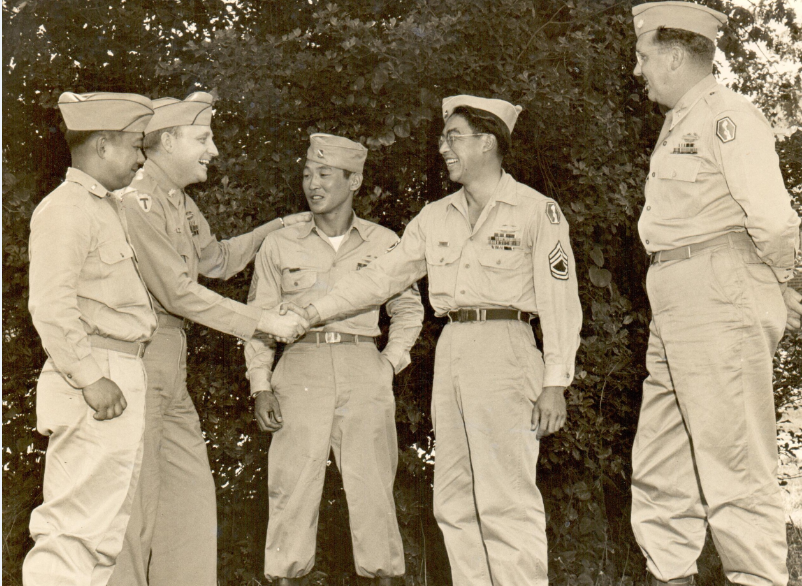 Ft. Belvoir, VA. July 13, 1946: MAJ Claude D. Roscoe, a survivor of the trapped Texas Battalion which was rescued by the 442ndin October 1944 in the Vosges forests of northeastern France, greets Tech Sgt Hiroshi Fujita of Sanger, CA, and Tech Sgt Mitsugi Tagawa of Chicago, IL. Roscoe is on assignment at Ft Belvoir. On the left is 1st Lt Thomas Kobayashi, 442nd Adjutant, and on the right is LTC Alfred A. Purcell, 442nd Commanding Officer. Photo: U.S. Signal Corps.
Ft. Belvoir, VA. July 13, 1946: MAJ Claude D. Roscoe, a survivor of the trapped Texas Battalion which was rescued by the 442ndin October 1944 in the Vosges forests of northeastern France, greets Tech Sgt Hiroshi Fujita of Sanger, CA, and Tech Sgt Mitsugi Tagawa of Chicago, IL. Roscoe is on assignment at Ft Belvoir. On the left is 1st Lt Thomas Kobayashi, 442nd Adjutant, and on the right is LTC Alfred A. Purcell, 442nd Commanding Officer. Photo: U.S. Signal Corps.

Washington, DC: Mr. MacDonald of radio station WINX (center) interviews twin brothers Laverne (left) and Conrad (right) Kurihara on their 442nd experience. The interview lasted 15 minutes. Conrad and Laverne served as color guards in the parade and review by President Truman. Photo: U.S. Signal Corps.
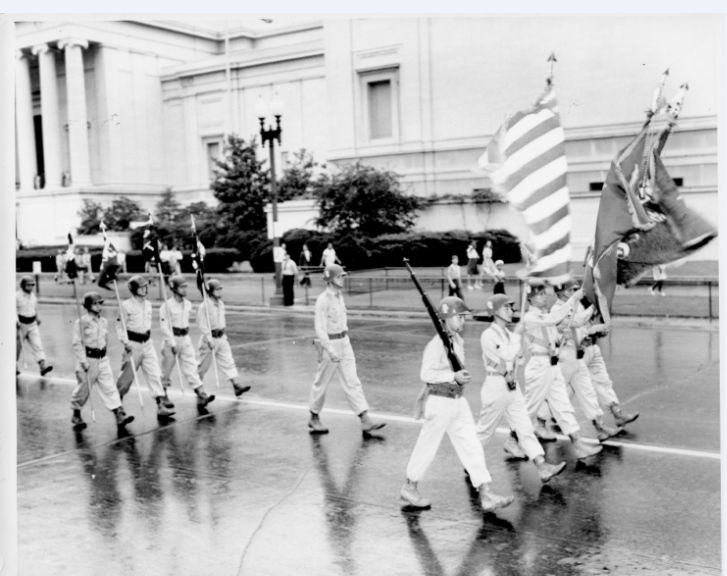
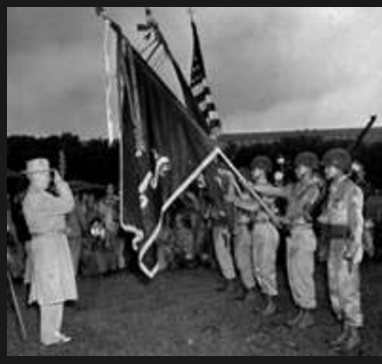
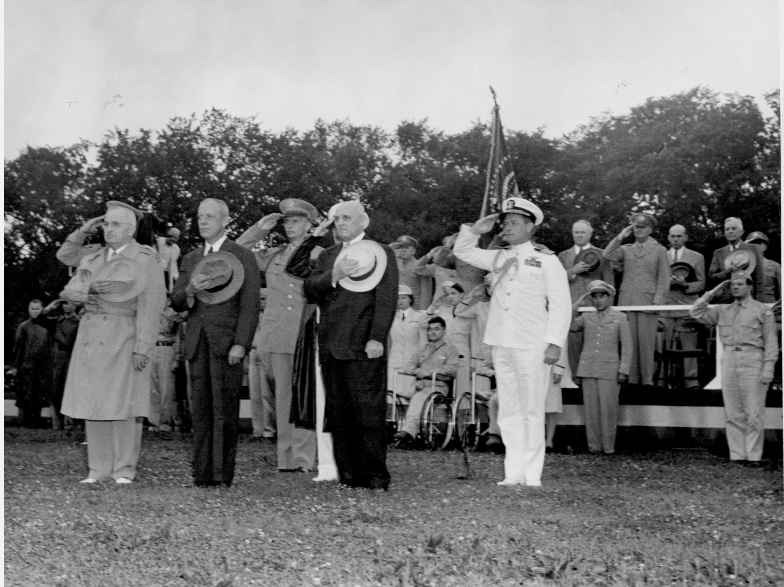 Washington, DC. July 15, 1946: 442nd RCT marched down Constitution Avenue from the US Capitol Building to the Ellipse where President Harry Truman reviewed the troops and presented the Presidential Distinguished Unit Citation. In the photo to the right, President Harry Truman (left) and Secretary of War Patterson review the 442nd at the Ellipse. Seated in wheel chairs behind the President are 442nd wounded soldiers from Walter Reed Army Hospital, and behind them are reviewing officials, including Dillon S. Myer, former Director of the War Relocation Authority; Earl Finch, the one-man USO for Nisei; General Jacobs Devers, Commanding General of Army Ground Forces; LTG J. Lawton Collins, Chief of Public Information; MG Alfred M. Gruenther, Deputy Commandant, National War College; MG Charles L. Bolte, former commanding general of 34th Infantry Division; and MG John T. Dahlquist, former commanding General of 36th (Texas) Division. Photos: U.S. Signal Corps.
Washington, DC. July 15, 1946: 442nd RCT marched down Constitution Avenue from the US Capitol Building to the Ellipse where President Harry Truman reviewed the troops and presented the Presidential Distinguished Unit Citation. In the photo to the right, President Harry Truman (left) and Secretary of War Patterson review the 442nd at the Ellipse. Seated in wheel chairs behind the President are 442nd wounded soldiers from Walter Reed Army Hospital, and behind them are reviewing officials, including Dillon S. Myer, former Director of the War Relocation Authority; Earl Finch, the one-man USO for Nisei; General Jacobs Devers, Commanding General of Army Ground Forces; LTG J. Lawton Collins, Chief of Public Information; MG Alfred M. Gruenther, Deputy Commandant, National War College; MG Charles L. Bolte, former commanding general of 34th Infantry Division; and MG John T. Dahlquist, former commanding General of 36th (Texas) Division. Photos: U.S. Signal Corps.
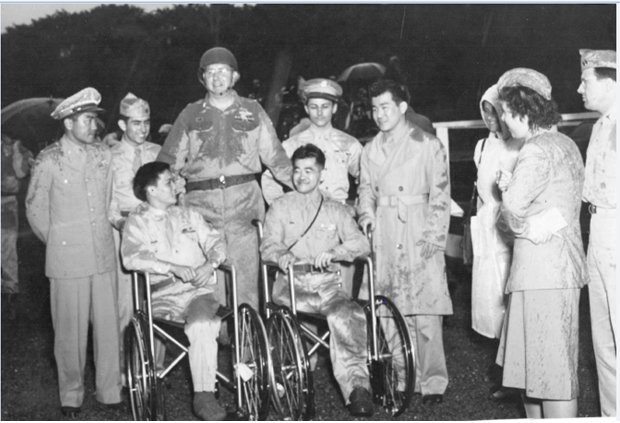
Ellipse, White House: Lt Colonel Alfred A. Pursall (Crystal City, MO) Commanding Officer of the 442nd RCT, is standing between PFC Terry Kato (Honolulu, HI) (Colonel’s right) and PFC Wilson Makabe (Loomis, CA) (Colonel’s left). On Kato’s right is 1st Lt Howard Miyake (Honolulu, HI) and on Makabe’s left, PFC Tadao Ono (Honolulu, HI). Miyake and Ono served in the 100th Battalion. Kato and Makabe were patients at Walter Reed Army Hospital. Photo: U.S. Signal Corps.
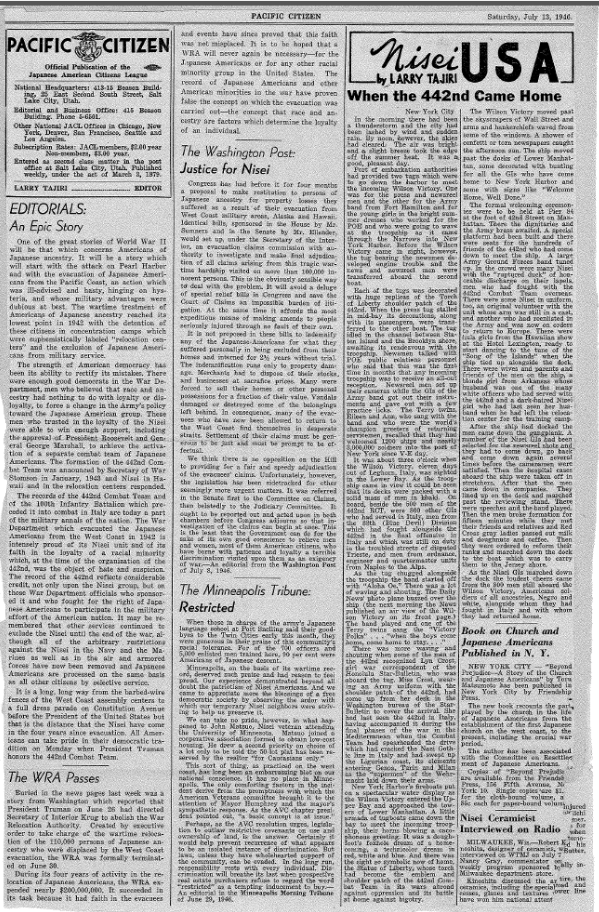
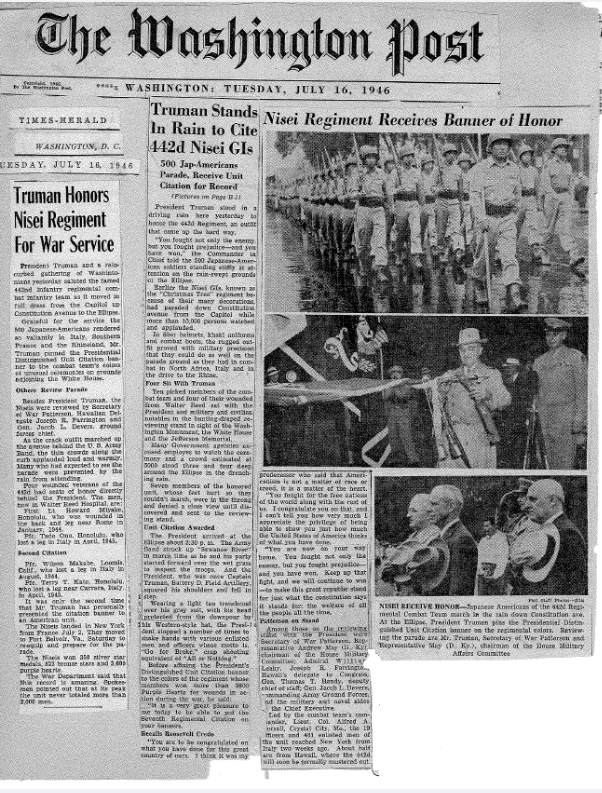
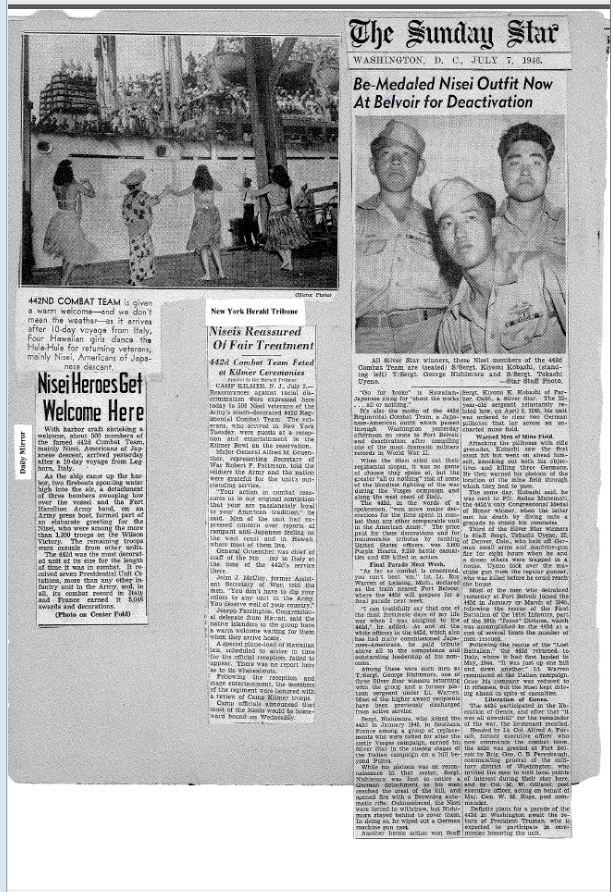
To see a larger version of any these images, right-click on the image and choose "Open image in new tab." Then you can zoom in to read.
Time Magazine reported the following (July 22, 1946): "Down Constitution Avenue this week marched one of the smartest, toughest fighting units the U.S. had ever sent to the battlefield. The 442nd Regimental Combat Team--all Nisei except for a sprinkling of officers--was home from the wars. On the rain-soaked Ellipse adjoining the White House, the wiry little solders, their crisp khaki crumpling to a soggy brown, stood rigidly at attention while President Truman fixed the Presidential Unit Citation to the regimental colors.
For the 442nd Regimental Combat Team, the war had been doubly hard. Its men had not only fought the Germans at their defensive best up the spine of Italy and in the Vosges; they had also fought prejudice at home.
Yet the Niseis' record was unexcelled. In 240 combat days, the original 3000 men and 6000 replacements collected eight unit citations, one Medal of Honor, 3600 Purple Hearts and a thousand other decorations. They lived up to their motto, "Go for Broke":* no less than 650 of the Purple Hearts had to be sent to next of kin (many of them in relocation centers) because the soldiers were dead. The 442nd also set an unbeatable mark for soldierly behavior: no man in the outfit had ever deserted.
As the regiment's vanguard, 500 strong, was shipped back to the U.S., the men had no idea what sort of welcome they would get. Fellow-soldiers knew they had proved themselves the hardest way of all, but would the folks at home know--or care?
New York gave part of the answer with harbor sirens and a reception committee of skimpily dressed wiggle dancers. Harry Truman and thousands of other civilians gave another part of the answer in Washington this week. As the fighting Nisei headed for their homes, they would get the answer to the rest of Combat Correspondent Terry Shimabukuro's question: "Will we, as Japanese-Americans, come home to something we can call our own?""
*Meaning "Shoot the Works" in Hawaii, home of more than half of the 442nd's men.
Congressional Gold Medal Awarded to 100th Infantry Battalion, 442nd Regimental Combat Team, and Nisei in MIS
On November 2, 2011, the US Congress awarded the Congressional Gold Medal, the highest civilian honor this nation can bestow, on the 100th Battalion, the 442nd RCT, and the Nisei who served in the Military Intelligence Service. Over 300 veterans of the 100th, the 442nd, and MIS from across the land, many in wheelchairs and some of them with oxygen tanks, received the honor at the US Capitol Building, Emancipation Hall. Eight members of Congress, led by former Speaker John Boehner, paid high tribute to the military role played by Nisei during WW II. National press coverage, including TV, was extensive.
.jpg) Observing President Barack Obama sign the Nisei Congressional Gold Medal Bill into law on October 5, 2010, are (L-R) Osamu Fujikawa, Grant Ichikawa, Lynn Kanaya, Jimmie Kanaya, Floyd Mori, behind Mori is Christine Sato Yamazaki, Terry Shima, Kelly Kuwayama, Congressman Adam Schiff, Senator Daniel Inouye, Congressman Bob Filner, Congresswoman Mazie Hirono, Congressman Djou, Congressman Michael Honda, and Secretary Eric Shinseki. White House photo.
Observing President Barack Obama sign the Nisei Congressional Gold Medal Bill into law on October 5, 2010, are (L-R) Osamu Fujikawa, Grant Ichikawa, Lynn Kanaya, Jimmie Kanaya, Floyd Mori, behind Mori is Christine Sato Yamazaki, Terry Shima, Kelly Kuwayama, Congressman Adam Schiff, Senator Daniel Inouye, Congressman Bob Filner, Congresswoman Mazie Hirono, Congressman Djou, Congressman Michael Honda, and Secretary Eric Shinseki. White House photo.
Highlights of the three-day program included the US Congress presentation of the CGM at the US Capitol, US Army Tribute to the 100, 442, and MIS, laying of wreaths at the National WW II Memorial, a gala dinner, and a program at the National Jap-anese American Memorial to Patriotism, where the names of over 800 Nisei who died in line of duty are inscribed on a granite wall. The inclusion of MIS and arrangements of these events were made by the National Veterans Network (NVN), an association of Nisei organizations and supporters headed by Christine Sato Yamazaki. Lieutenant General Joseph Peterson and Major Gen-eral Anthony Taguba served as principal liaison with the US Army. Secretary Eric Shinseki's remarks at the gala can be read here.
To see Bill S. 1055, click here. The added significance of PL 111-254 is US Senator Daniel Inouye’s signature as President Pro Tempore of the US Senate, a position that is 3rd-in-line for the Presidency. In January 1942, shortly after Japan attacked Pearl Harbor, the draft classification for Japanese Americans was changed from 1-A (eligible for military duty) to 4-C (alien, unfit for military duty). It is remarkable that by 2011, a Japanese American could be 3rd-in-line for the Presidency in case of an emergency. Reforms since the end of WW II speak of the greatness of America.
The Congressional Gold Medal
A heroes' welcome in 2011: https://www.youtube.com/watch?v=FRF87acVhTw This welcome at the Reagan National Airport in Washington, DC, was arranged by COL Frank Nekoba, USAF (Ret), and Barbara Nekoba as a personal project, including the payment of all expenses. Frank and Barbara coordinated their endeavor with the National Veterans Network (NVN) which conducted similar welcoming courtesies at the Dulles Airport and the Baltimore Washington Airport.
Fifty students from the Spark Matsunaga Elementary School in Germantown, MD, sang the national anthem at the Bronze Star Medals presentation ceremony on November 1, 2011, at the Washington Hilton Hotel in Washington, DC. Fifty veterans of the 100th Bn and 442nd, a portion of the 321 Nisei who came to Washington, DC, to receive the Congressional Gold Medal, received the Bronze Star Medal from Army Chief of Staff General Raymond Odierno for their service in Italy and France during WWII. Photo: Yuzo Tokita
Click here to see the printed program for the November 1, 2011 Bronze Star Awards program at the Washington Hilton.

General Raymond Odierno presents the Bronze Star Medal to George Joe Sakato, one of the 50 to receive the Bronze Star Medal (BSM) on November 1, 2011. In 1946 Army Chief of Staff George C. Marshall felt that the infantrymen were under-recognized. He issued an order that would allow all infantrymen of WWII with a Combat Infantryman’s Badge or Combat Medic’s Badge to claim a BSM over and above any BSM he had received during the War. Many 442nd veterans were not aware of this recognition. 321 veterans of the 100th Bn, 442nd RCT, and the Military Intelligence Service were in Washington, DC, to receive the Congressional Gold Medal from the US Congress. Photo: U.S. Army.
On November 2, 2011, the Congressional Gold Medal (CGM), the highest civilian honor this nation can bestow, was awarded to the 100th Infantry Battalion, the 442nd Regimental Combat Team, and the Nisei who served in the Military Intelligence Service (MIS). 321 Nisei veterans representing these units and over 1,000 families of deceased veterans and friends viewed the ceremony at the Emancipation Hall of the US Congress. The three recipients were Ted Mitsuo Hamasu (100th), Dr. Susumu Ito (442nd) and Grant Ichikawa (MIS). The Congressional speakers were House Speaker John Boehner; Congresswoman Nancy Pelosi, House Minority Leader; Congressmen Adam Schiff, House sponsor of PL 111-254; Ralph Hall of Texas; Senators John McCain, Chairman Senate Armed Services Committee; Barbara Boxer, sponsor of PL 111-254; Mitch McConnell, Minority Leader; Harry Reid, Majority Leader, and Daniel Inouye. Senate Chaplain Barry C. Black and House Chaplain Patrick Conroy provided the opening and closing invocations, respectively. Each speaker, except Inouye, spoke eloquently of the loyalty, courage and patriotism of the Nisei in combat in Europe and Asia while many of their families were detained at home in barbed wire enclosed detention camps guarded by armed sentries. Inouye, the only Congressional speaker who received a standing ovation before and after his brief remarks, thanked the US Congress and the American people “for this extraordinary distinction” and said the honor applies to all Nisei veterans of WW II and the men who sacrificed their lives to protect our freedom. Speaker Boehner presented the CGM consecutively to the three veterans, allowed each veteran to hold it momentarily and retrieved it each time. Boehner then passed the CGM to a representative of the Smithsonian Institution, the custodian of all CGMs. The US Mint also produced bronze replicas of the CGM. At the November 2nd dinner at the Washington Hilton Hotel, Ms. Donna Fujimoto Cole of Houston, TX, presented each Nisei veteran with a CGM replica in bronze. This photo shows, from left to right, Hamasu, Boehner, Ito, Congresswoman Nancy Pelosi, Ichikawa, and Senator Inouye. Photo: National Veterans Network.
NBC Nightly News with Brian Williams on Saturday, November 5, 2011.
ABC's David Ono narrates this documentary that aired in November 2011.
The Legacy of the WWII Nisei
The combat performance records of the 442nd RCT and Tuskegee Airmen contributed to the climate for post WWII reforms, which, in turn, leveled the playing field for minorities to compete for any job and rank. During WWII, the highest rank achieved by a Nisei in the US Army was Major and there were only four. They were assigned almost exclusively to the infantry. The US Navy and Marines banned their enlistments. Fast forward to the Vietnam War. Competing with the best of the best, Japanese Americans served in all branches of service, in the most sensitive war-planning positions, in the cockpits of fighters and bombers as pilots and navigators, with ranks of major, lieutenant colonel, and colonel. Following the Vietnam War, 45 Japanese Americans were promoted to admirals and generals with three reaching the rank of full general or full admiral with four stars.
Japanese Americans reached high-ranking levels in other professions as well, such as politics (the US Congress and Cabinet positions), academia, business, and space exploration. Federal and state discriminatory laws were repealed. The Immigration and Nationality Act of 1952 allowed our immigrant parents to apply for US citizenship and the Civil Liberties Act of 1988 noted that internment was not necessary and that it was caused by war hysteria, racial prejudice, and the failure of political leadership. President Ronald Reagan offered a formal official apology for the internment. In November 2011, the US Congress awarded the Congressional Gold Medal--the highest civilian honor this nation can bestow--to the 100th Battalion, the 442nd RCT, and the Nisei in the MIS. A Japanese American was selected by his peers to serve as President Pro Tempore of the US Senate, a position, constitutionally, that placed Senator Daniel Inouye third in line for the Presidency. Only 70 years ago he was given draft classification 4-C--alien unfit for military duty.
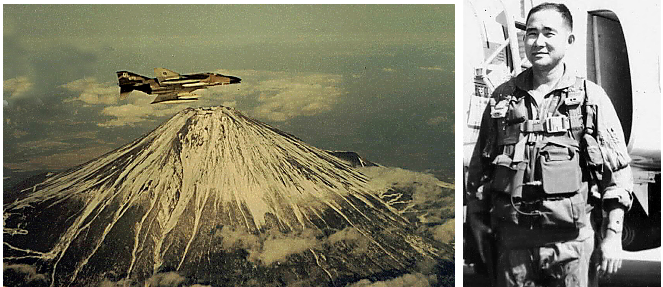
Left: COL Bob Kan, USAF, flying over Mt. Fuji, Japan, 1972.
Right: COL Bob Kan, USAF, in combat gear, 1965.
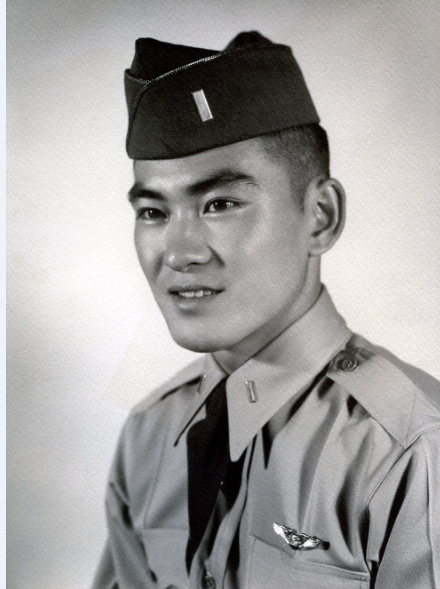
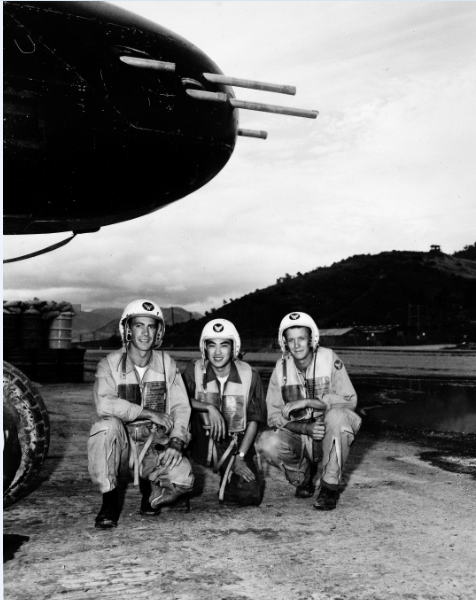
The fellow on the right side of the photo is A/3C Clarence “Pat” Daily who careered in the USAF as well. He flew combat during the Vietnam War and retired as a M/Sgt, I believe. He is still alive and we are still in contact through email. And, that’s me in the middle."
Other Contributors to the Greatness of America
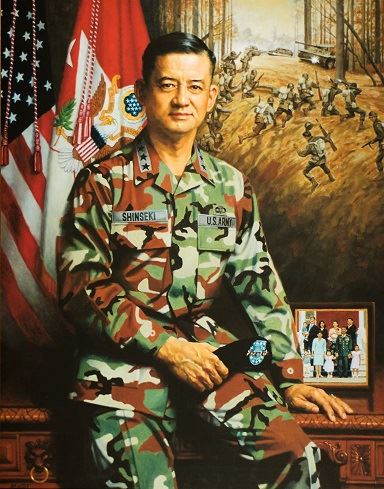
The Honorable Eric Shinseki, former US Secretary
of Veterans Affairs, 34th Army Chief of Staff
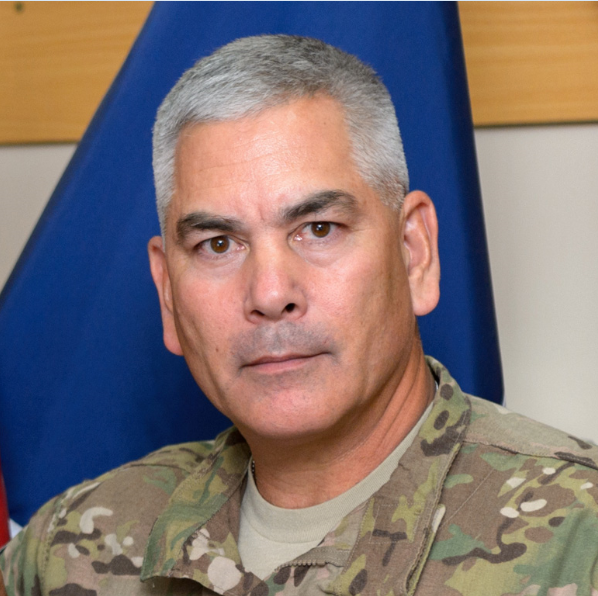
General John Campbell, USA, is Commanding General UN Forces in Afghanistan
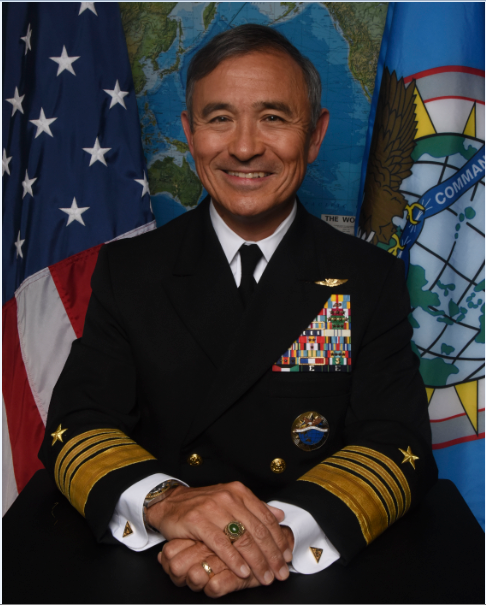
Admiral Harry B. Harris, Jr., USN, Commander US Pacific Command
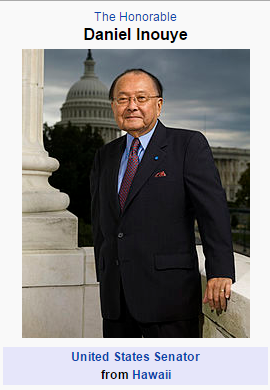
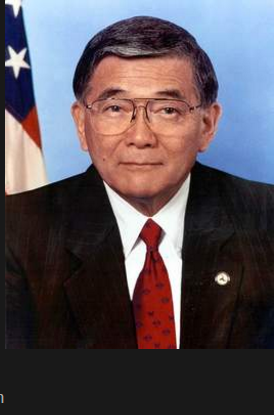
The Honorable Norman Y. Mineta, internee at Heart Mountain, Congressman from San Jose, CA, former US Secretary of Commerce and
US Secretary of Transportation
The Honorable Daniel Inouye fought in WWII as a member of the 442nd RCT.
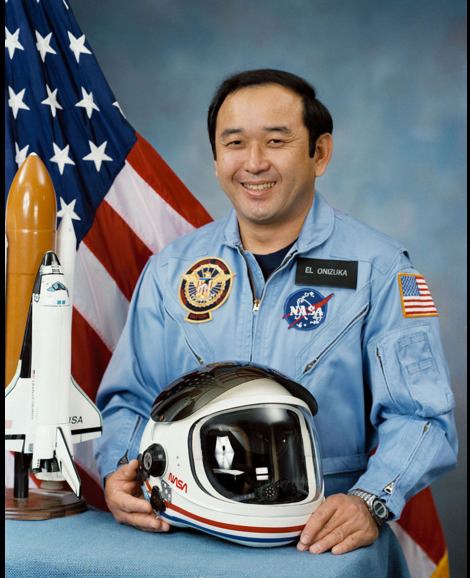 Col. Ellison S. Onizuka, USAF, was an astronaut.
Col. Ellison S. Onizuka, USAF, was an astronaut.
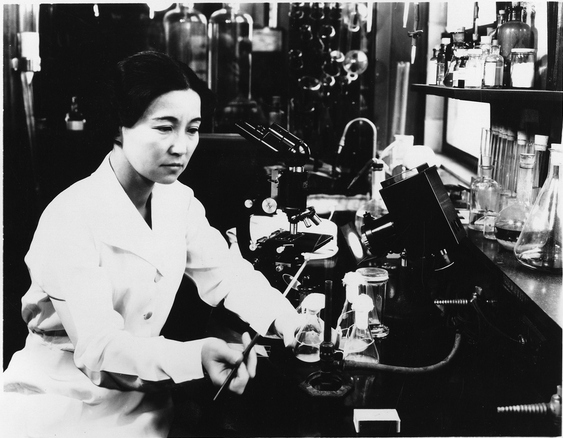 Ruby Hirose (1904-1960), a Nisei scientist whose infantile paralysis vaccine was groundbreaking in the world of science.
Ruby Hirose (1904-1960), a Nisei scientist whose infantile paralysis vaccine was groundbreaking in the world of science.
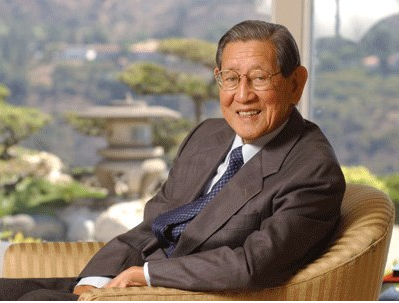
In the world of business, the late George Aratani, JAVA member, was the founder of Mikasa China and the Kenwood corporation.
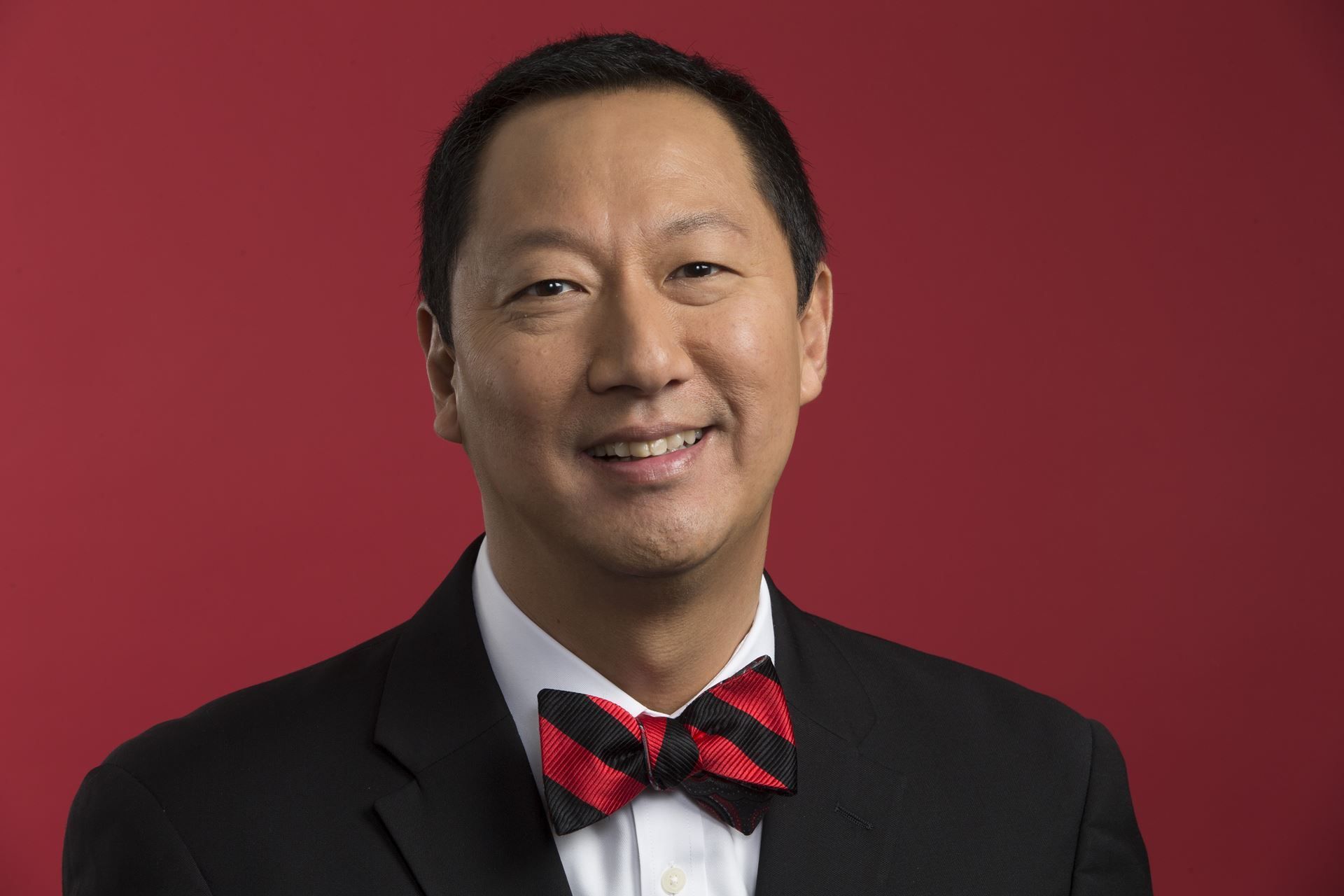
left: Educator Dr. Santa J. Ono, President, University of Cincinnati
Japanese American Veterans at the White House
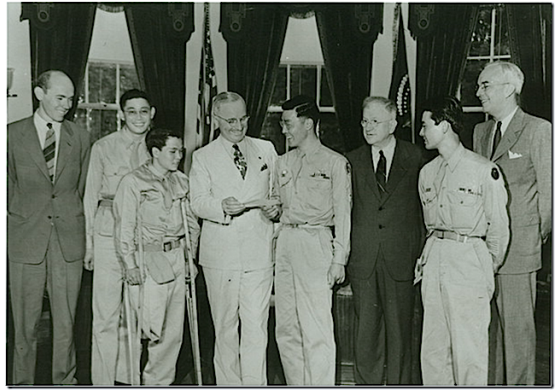
September 11, 1945: Kelly Kuwayama handing President Harry Truman a check representing donations from men of the 442nd for a Franklin Roosevelt Memorial. On the left is Earl Finch, a strong supporter of the 442nd and second from the left is George M. Tsujimoto.

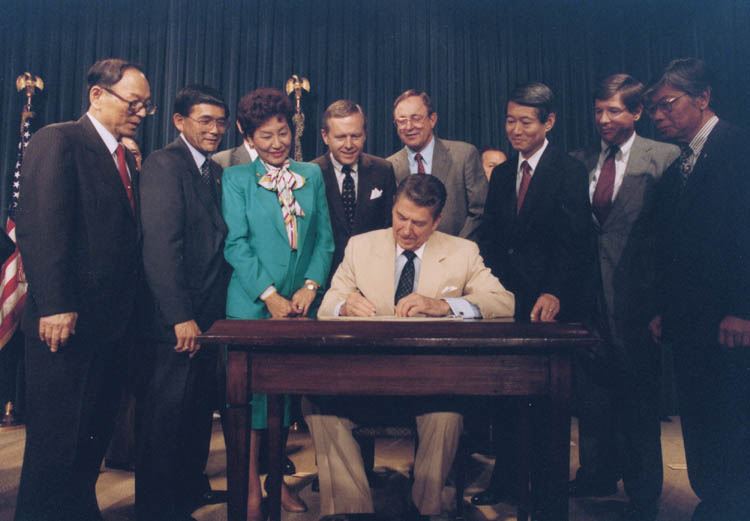
On October 27, 1953, Hershey Miyamura of Gallup, New Mexico, was invited to the White House to receive the Medal of Honor from President Dwight Eisenhower. Hershey joined the 442nd RCT as a replacement five days after Germany surrendered. He returned with the 442nd which was reviewed by President Truman on July 15, 1946, near the White house. He was recalled to active duty for the Korean War and served in Korea where he was awarded the Medal of Honor for gallantry over and beyond the call of duty.
Photo: Terry Miyamura.
President Ronald Reagan signs the Civil Liberties Act of 1988 in an official ceremony.
Standing left to right: Senator Spark Matsunaga, Rep. Norman Mineta, Rep. Pat Saiki, Senator Pete Wilson, Rep. Don Young,
Rep. Bob Matsui, Rep. Bill Lowery, and JACL President Harry Kajihara.
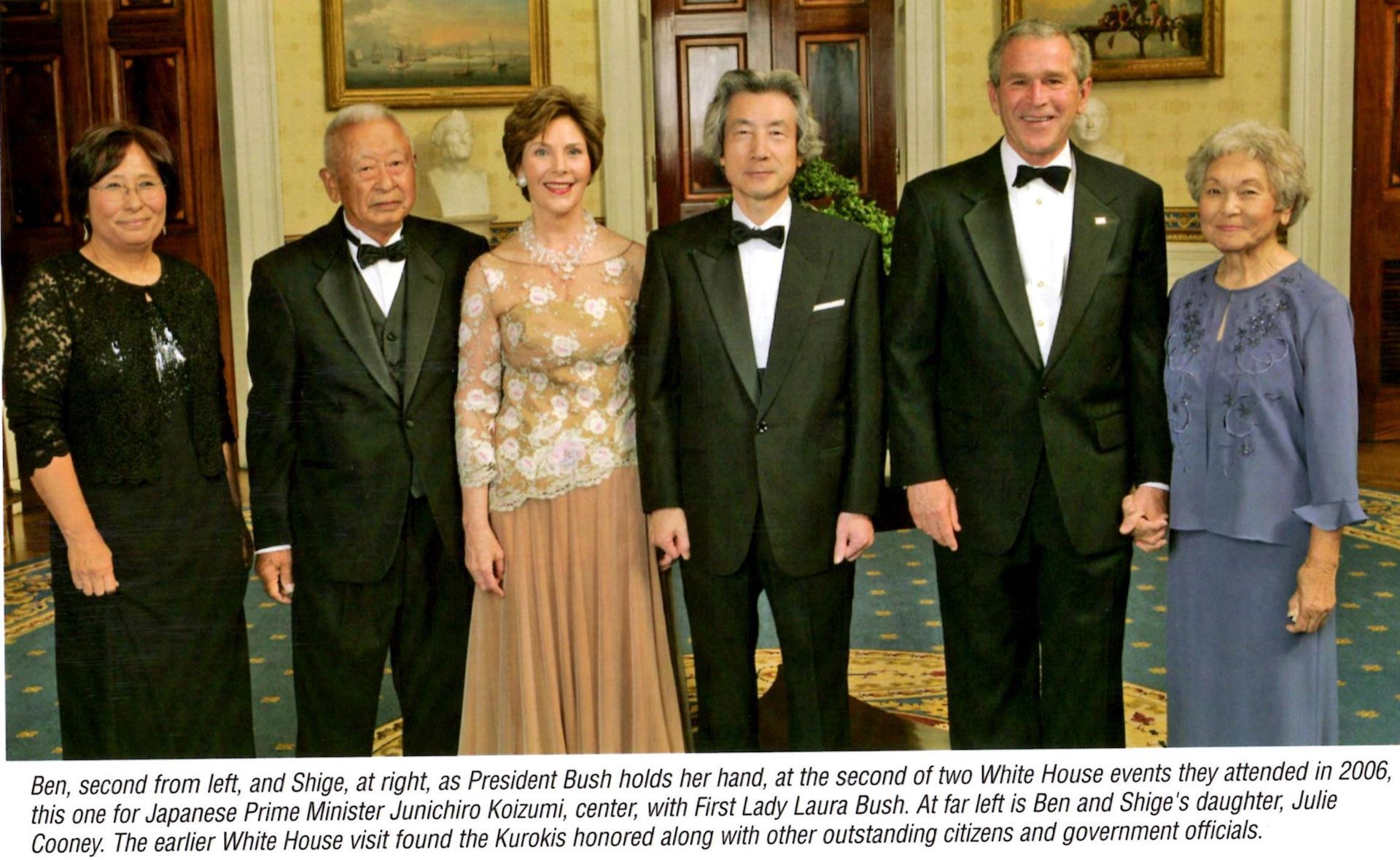
JAVA Nisei veterans were guests of honor at the 2008 Asia Pacific Heritage Month Program. Following the program President Bush stepped down from the stage to greet the veterans. Here he is speaking with Grant Hirabayashi, veteran of Merrill’s Marauders. L-R: Terry Shima, Kelly Kuwayama, Ben Kuroki, Grant Hirabayashi, Grant Ichikawa, Joe Ichiuji.
Photo: Gerald Yamada.
When President Bush, in his remarks, discussed the Nisei combat record, the Nisei veterans spontaneously and in unison stood up and rendered a hand salute. The President paused and returned the salute. This was a moment to cherish. Photo: Gerald Yamada.
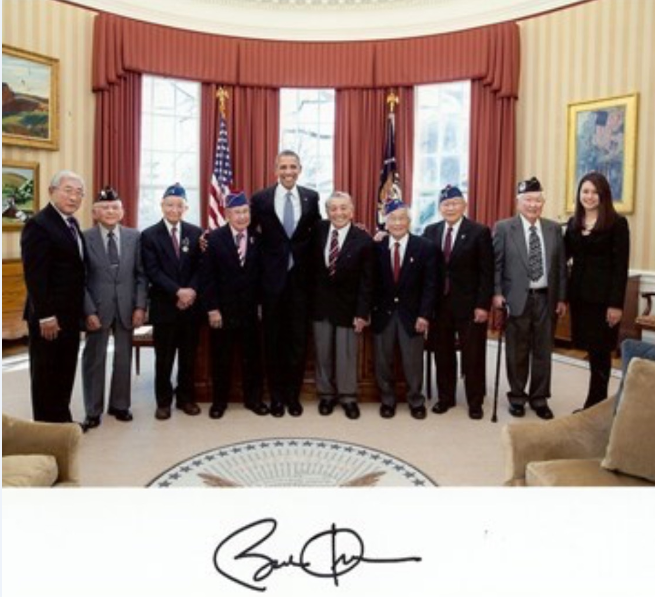
As part of the 2014 Remembrance Day events Christine Sato-Yamazaki, Chairperson of the National Veterans Network, and Floyd Mori, President and CEO of Asian Pacific American Institute for Congressional Studies (APAICS), arranged for seven Nisei veterans to meet with President Barack Obama on February 18, 2014, at the Oval Office of the White House. The President thanked the veterans for their service and congratulated them on the return to the Smithsonian of the CGM. On February 18, 2014, Guantam Raghaven of the White House staff posted a report of the visit on the White House website. In the photo with President Obama (L-R): Floyd Mori; Joseph Kurata, San Francisco, CA, MIS; Terry Shima, Gaithersburg, MD, 442nd; Tommie Okabayashi, Houston, TX, 442nd; President Obama; James Takemori, Arlington, VA, 100th Bn; Susumu Ito, Wellesley, MA, 522nd Field Artillery Battalion; Nelson Akagi, Salt Lake City, UT, 522nd; Grant Ichikawa; Vienna, VA, MIS; Christine Sato-Yamazaki.
The President told the visitors: “We are all grateful to you for everything you have done for our country. Because of your outstanding bravery, it shines a spotlight on the wrong that was done to Japanese Americans during World War II. And you know that has had a lasting impact on the country as a whole because it reminded us that this country is built not on a particular race or religion or ethnicity, but it is based on creed and ideals that you have all followed. And so you know that what you did was important not only to the world, but it was important to reshaping how America thinks about itself. For that we are very, very thankful.”

